#the original point i wanted to make was that if an ethel fan had to work a full day on a farm in some Rural Area they might fucking implode
Text
seeing ethel cain aesthetic blogs tag normal photos as Ruralcore + their twenty billion southern gothic tags is insane. to me.
#I don't know how to properly articulate this but it's just crazy to me. personally.#ethel cain stans will label everything southern gothic + romanticize the loneliness of the south and then#they'll turn around and insult the south out of straight ignorance#i tried explaining how southern politics weren't the same as the southern reality + how poverty affects the south so deeply to an ethel fan#and they didn't hear a word. they went on to explain to me how the entire south was racist yada yada yada#this was a face to face conversation. by the way.#anyways. what can you do :)#jack.txt#the original point i wanted to make was that if an ethel fan had to work a full day on a farm in some Rural Area they might fucking implode#I'm talking about fans from tiktok here. that breed. everyone else can stay
2 notes
·
View notes
Photo
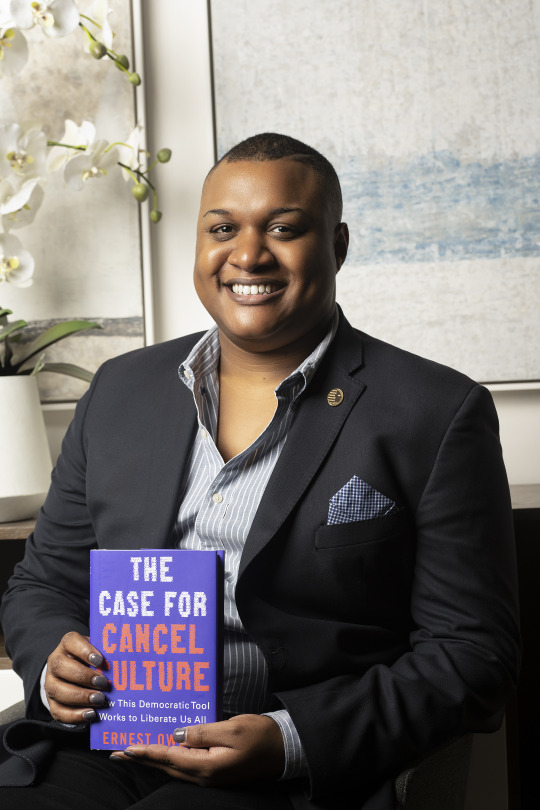
IT IS FINALLY HERE! THE CASE FOR CANCEL CULTURE IS EVERYWHERE WHERE BOOKS ARE SOLD!
I am officially a published author!I’m reflecting on the many years of preparation, interviews, writing, editing, drafting, rejections, renewals, re-shifts, rebranding, and re-learning it took to get to this point.
To be able to hold this book in my hands and know that thousands of others will too is an inexplicable feeling that I’m having a hard time putting in words.
I’m truly grateful to my book agent, Stephanie Winter at P.S. Literary agency, for believing in this project from the very beginning. I want to thank my agent, Sean Lawton at Collective Speakers for making sure I stay booked, busy, and paid during this journey. Eric Smith, you already know how I feel about you and forever gonna sing your praises for getting this all started in that little cafe in Drexel four years ago. Nicole Cashman and the team at Cashman & Associates for lending your incredible services in making sure Philly was centered in this experience. Jeannine Cook and your team at Harriet’s Bookstore are the warriors that backed this book from the jump – thank you for relentless support. Patty Jackson, thank you – what is understood doesn’t have to be fully explained. To my team at St. Martin’s Press/Macmillan Publishers: my editor Cassidy Graham, my publicist John Karle, the marketing crew lead by Martin Quinn, and everyone at Macmillan Audiobooks for taking this to the next level! Forever thankful for the editorial guidance and feedback of Ceri Marsh, who was a true friend to behold during this journey!
To all of the people who allowed me to interview them for this book: Kenyette Tisha Barnes, Leslie Mac, Daniela Capistrano, Jon Pierre, William E. Ketchum, III, Michael Coard, Preston Mitchum, Randy Robinson, Dawn Ennis, J. Mase III, Dr. Meredith D. Clark, Desiree Peterkin Bell, Dorcas A., and Dr. Anthea Butler -- thank you so much for lending your important voice to this topic. I learned so much from you all and this book is all the better for it!
I want to thank my family and friends for allowing me to be great at this time. All of the conversations we’ve had and all of the time you all let me have to exhaust you on all things cancel culture hasn’t been taken for granted. Definitely want to thank my husband Barry Johnson for pushing me to go all the way in writing this book in the first place. What initially was just a guest op-ed in the New York Times became a full-length book that was deeper than any of the original ideas I previously had for one. Thank you for reminding me to never play it safe.
To every journalist, media outlet, blogger, influencer, and fan who has written, posted, purchased and/or shouted-out this book, thank you so much for believing in this work and giving me the confidence to keep going! Seriously, all of that love was truly felt.
And lastly, you’ll see on the first page that I dedicate this book “To my beloved grandmother, Ethel, who first taught me how to cancel unapologetically, and to my dear mother, Lolita, who later taught me how to cancel with grace.”
Enough said.
If you haven’t already, you can now purchase THE CASE FOR CANCEL CULTURE where ever hardback books AND/OR audiobooks are sold.
Photography by Ronald Gray
0 notes
Text
Alright, Direct thoughts time I guess. I'm not gonna be all flowery and happy because I honestly wasn't that impressed so if you don't wanna read the mean ol spoiled nintendo fans thoughts then keep scrolling.
I care not for Fire Emblem. I also care not fore Advance Wars but I'm still happy to see that this game is coming, I don't want it, but any time Nintendo ressurects an old IP is fine with me. Also the character designs are fun.
I care not for Mario sports spinoffs, but I do think we were overdue for a new Strikers game. I don't want it, but I admit they fill a role, and I do appreciate the more unique rough and edgy style of the striker games, and of course Next Level is bringing their usual brand of extra expressiveness to the Mario crew that Nintendo isn't as good at doing themselves... I do worry that this may be a little more sanitized compared to older strikers games.
I'm just not feeling Splatoon 3. I loved the first Splatoon. I had an okay time with the second one but it felt like more of the same... and this third one so far just looks like even more of the same than before... I guess we'll have to wait and see more of the single player campaign.
Kirby is horrifying now I see.
I guess Chrono Cross rumors were true. I don't feel a storng urgency to play that game, I like Chrono Trigger just fine but I am not one of those people that would put it in my top 10 or even top 50, and I hear the sequel isn't that good. Maybe if it's cheap I'll check it out.
I've been curious about Klonoa forever so i'll check that out if the price is right.
LIVE A LIVE is a genuine suprise. That game has been on my backlog forever. I'm actually not a huge fan of the 3D HD stuff though so I think I may stick with the fan translated SNES version unless they include the original with the remake ( something I feel every remake should be doing. )
Already said my piece about the Kingdom Hearts releases. If you don't have a playstation, pirate it. DO. NOT. SUPPORT. CLOUD. GAMING. It's fucking stupid.
I was excited to see new stuff for Metroid but it all turned out to be difficulty options that should have been in the base game and a boss rush, which also should have been in the base game. Can't complain too much when it's a free update, but I really wish these things didn't have to be added later. Not everyone has guaranteed ongoing internet access.
The EarthBound re-releases.... sigh... I'm just tired of Nintendo and their fans feeling like they deserve a pat on the back for doing things that they've already done before, and should just be an expected thing that they should always do, and doing it a few years later than they should. Earthbound releases are not a huge deal anymore. None of Nintendo's retro releases are and they really shouldn't be praised for the way they handle their retro games, especially since they used to do a much better job at it, but failed to make sure it carried forward to current generations.
Switch Sports is also a genuine suprise. I thought that series would have died with the wii. Is the same audience for those games even on the switch? I know Switch has outsold the Wii at this point but that's largeley due to it being a handheld and not a great console to share with other ppl. I don't exactly see Granny Ethel playing tennis at the retirement home with a Joycon. Still, I liked Wii sports. If I can get it for a bargain bin price, maybe i'd pick it up.
I forgot that I bought portal on Steam ages ago and never played it... oops. I really should give it a go, it's one of those instant classics, yes?
Mario Kart's DLC is pretty cool. Mario Kart 8 really is going to be the best Mario Kart game at this rate, huh? The Switch version already had more tracks than any other Mario Kart game before it thanks to the DLC from the Wii U version being bundled in. And they only want a quarter of the game's price to double the number of tracks? This is way better than a new Mario Kart game imo.
If I didn't mention an announcement, it means I have no thoughts about it.
5 notes
·
View notes
Text
Riverdale should have been a Disney show
Riverdale should have been a Disney show. There I said it. I'll admit the first season was fine Great even. Self-contained with an intriguing mystery and you waited at the edge of your seat for what will happen next. But then... Part of the problem for me is because I've read the original comics since I was a girl. I still do get some from my mom, and the way they have changed the characters just bug me.Betty used to be the girl next door, always hopeful, smart, trying to figure out the mystery. And it was perfect that she was a reporter because Betty was always someone who valued honesty so her being the roving reporter was perfect. And her taking pills for anxiety or some sort of disorder was also a nice take because she does take on so much, and tries so hard to help and be good and nice and perfect. All the stress.
Archie was also great in the first season. A bit horny, but he means well, and he truly is an average American boy so his big trouble of choosing between music and football. He's a klutz and sometimes his plans go sideways but he means well, he's all for family and Riverdale and school spirit. None of this whole Red Hood/semi mafia/wrestling nonsense.
I actually really liked their take on Veronica, she still a bit materialistic and thinks she can depend on her wealth to get her out of trouble but I do like their take on trying to be enterneauripal and working to act less high class society girl as she was used to.
Jughead, I'm conflicted with. Because he's good I guess as a brooding, investigative journalist he's good. It fits the setting of the show. But I do have a soft spot for him as the sane man to Archie. Going about his business, surprisingly philosophical. And you can't forget the most important attribute to him. His love of food! I miss that. Like the one scene in season 1, I forget what exactly but basically he ordered burgers and when Cole Sprouse just protectively held the burger to him...such a nice touch. That sort of guy I can see as a DCOM. The genius ditz I guess it's called. But he's not dumb. He just prefers napping to being awake.
Now the others...omg.I have a bone to pick when it comes to the other characters in Riverdale. Josie and the Pussycats-- they are such lively musicians who solve crimes, sometimes in space. ABsolutely wasted here. Melody barely had any lines. And they didn't have Alex or Alexandra Cabot which was such a shame. I know, I know they're in the new Katy Keene show but having them be step-siblings who used to date is wrong and weird and bad and no! Stop having the twins in these shows with vaguly incesteous feelings. It's weird!
Kevin Keller, all his storylines revolve around his bfs or lack of bfs or how much he wants a bf. The Kevin of Archie comics was so much more well-rounded. He was head of ROTC, he was class president, he ran marathons, he was Veronica's bff, he was a reporter. He had an appetite to match Jughead's. He even had a brief crush on Jughead! He was so much better than this sham. He was confident in who he was and did his best to help others feel good about themselves too because he knows not everyone is lucky to come out as LGTBQ in a supportive environment.
Reggie. I think not giving him enough of an arc in season 1 really backfired because if he appears, it's only as Veronica's arm candy. Which is a shame because he is a good contrast to Archie. A bit richer yet a cheapskate. Thinks he's a casanova, loves being the class prankster. A modern day politician with his sweet words when all he cares about himself. Basically like

Yet he has his hidden depths with his neglectful workaholic parents and jealousy of Archie's popularity.
Cheryl. Omg Cheryl. They have ruined you here. I'm sorry, I do NOT find any of her lines iconic. It's like she swallowed urban dictionary and a gothic novel and came out all jumbled in a google translate. She may be abused but the way she still treats others like shit and gaslights her gf and makes everything about her is just...ugh!!! OMg, comics Cheryl is actually fun and iconic. She's as rich and pretty as Veronica and unafraid to use it. She wants to be a star like a modern day influencer. She's a red-haired Sharpay Evans basically.
Also Jason, her twin whom they sadly killed off. He was also fun like a meaner, snobbier version of Reggie. But with a huge crush on Betty which I think could have been used to milk such drama.
Polly also got hit badly. She was a good older sister. She was a reporter, and inspired Betty's enviormental-feminist activities. A sane person. Not a cult worshipping cuckoo.
Toni Topaz, ah she was so good in season 2 and then they made her Cheryl's arm candy. Alas. I liked her as a friend to Jughead. In the comics, she was his equal in food contests. That's no small feat. She was cool, and joined Betty's band and... she was her own person. Remember when Toni used to be a photographer for the South Side paper. Yeah. Basically Toni as a 3d character with personality. Please return.
Dilton. Oh Dilton. Once the smartest person in the Archie universe and they turned you into a survival freak to get killed by the gargoyle king. Or whomever. I just remember he got killed somehow. Honestly, they should have stuck to smart Dilton. They need a smart scientist there, cuz no one is using their brains in Riverdale.
Chuck. They have done you SUCH A DISSERVICE! So so bad. Chuck was a good person! He was a cartoonist, and a basketball player and Archie's friend. (Yeah, that's right Archie has friends in the comics. Even though Riverdale makes some effort to show Archie and Jug's bond, they're mainly consorting with their gfs. In the comics, they had guy nights. Reggie, Chuck, Kevin, Dilton, Moose. Come on show. Friendships are just as important.) And what did they do, make him a lying scumbag, turn him good and then have him arrested because of what Cheryl did! No, no no. Bad writers. Just no.
Ethel Muggs. You have also been wronged in season 3. Making her a crazy freak. Ethel in season 1 was nice. Ethel in the comics is nice. Plain but with a good heart even though she had a slightly obsessive crush on Jughead. Here, making her cult worshipper.... smdh.
Okay at this point I know I sound like a bitter, bitter person complaining how it'S nOt liKE tHe cOmICs. But hey, I admit season 1 was good even if they changed the characters a bit. It’s just that I watched Riverdale because of the property it derived from. Because of the comics. At the least I expected some faithfulness to the characters. Not make them all so inconsistent and crazy.
It's just the writing is so inconsistent! The plots hop around and so do their moods. Bughead and Choni broke up for one episode and then they got right back together. Even though they had VALID reasons to break up. Nope. That made fans mad. So they had to get back together. Ugh. And Archie got attacked by a bear and was so traumatized that he broke up with Veronica because "he's changed" for like two episodes before forgetting about it and going back to Veronica.
Oh which brings me to the ridiculous "love triangle" of Archie/Reggie/Veronica where she couldn't choose. Please, Archie and Veronica were reuniting and planning to go run away for a weekend together. Reggie was completely forgotten until he walked in on them. And Veronica couldn't decide because she loves them both? No, she didn't. She may have felt bad to tell Reggie but it's not because she loved him. Forgetting a guy so quickly...yeah great proof of love. Horniness maybe. But her indecisiveness makes her look bad. Don’t tease a will they, won’t they when the answer is so obvious.
If you're going to do something like that, you should have there be something called CONSEQUENCES! They can get back together but at least wait. Wait 8 episodes at least so they can have character development. But who am I kidding. Character development is not the goal of this show. The character's just move because the writer's want them too not because it fits their personalities. Such as Archie's grieved reaction for baby Teeth in season 3.
Not only do I have no idea when (the ridiculously named) Baby Teeth appeared, much less why Archie or I should care about his death. But sometimes the show juggles too much. Too many characters. Too many plots. It's all so ugh!!!
So my final thought on this is... Riverdale should have been a disney channel sitcom.
Archie comics are about family friendly entertainment and sometimes imparted lessons... well so does Disney. I get the appeal of having Riverdale reach a new teen generation, but from what I can see the only big thing Riverdale on CW is that it allows alcohol and gartituous sex scenes.
Which is another small gripe of mine. I can handle sex scenes (hello Magic Mike XXL) but so many at such inappropriate moments too It's like that scene in an action movie where they suddenly kiss when they should be running for their lives. No teen is that horny all the time. Plus there's always less is more. If one kisses so much it loses the meaning. If you think your shirtless Archie is going to distract me from lack of plot haha. No. Plot and consistency still sucks and shirtless Archie does not make it better.
But Riverdale as a Disney show can work. After all the comic stories are a bit formulaic. It's all high school hijinks. And all the characters fit an archetype. Archie, the protagonist. Veronica, the fashionista. Betty, the reporter. Jughead, the slacker. Reggie, the class clown/bad friend. Cheryl, the Sharpay, Kevin, the sane one.
And if people want a season long story arc with dramatics, Disney can actually handle it too. After all they had the mysterious "threat' lurking in the background of My babysitter's a vampire season 2. Or the Juliet and Mason saga of Wizards of Waverly Place.
And if people want adult situations, look on to Jessie. Rewatching an episode now, there were so many adult jokes and references that flew over my head so they could sneak those in. Heck, Disney channel is infamous for all the innuendos they manage.
And they handle consistency. Cody and Bailey broke up in Suite life on deck, they actually stayed broken up for a good half season. Gabe matured from a prankster tween to teen in love in Good Luck Charlie. Actions have consequences, characters grow. Storytelling 101
And the best part is they don't even have to think too hard for the plots of the week. They literally can build on stories from the comics. All 80 years of it.
And I have put some examples right here from my own Archie comics.
Like Veronica literally being the fashion police.
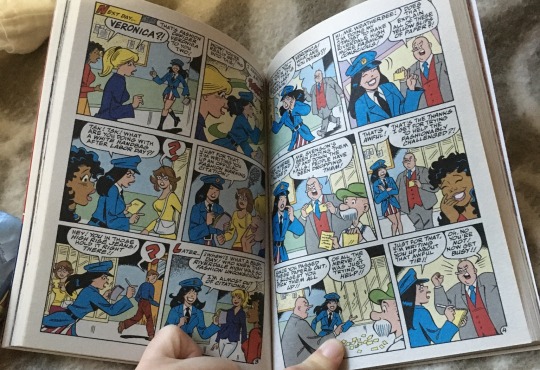
Veronica and Cheryl teaming up + rolling around in their money.
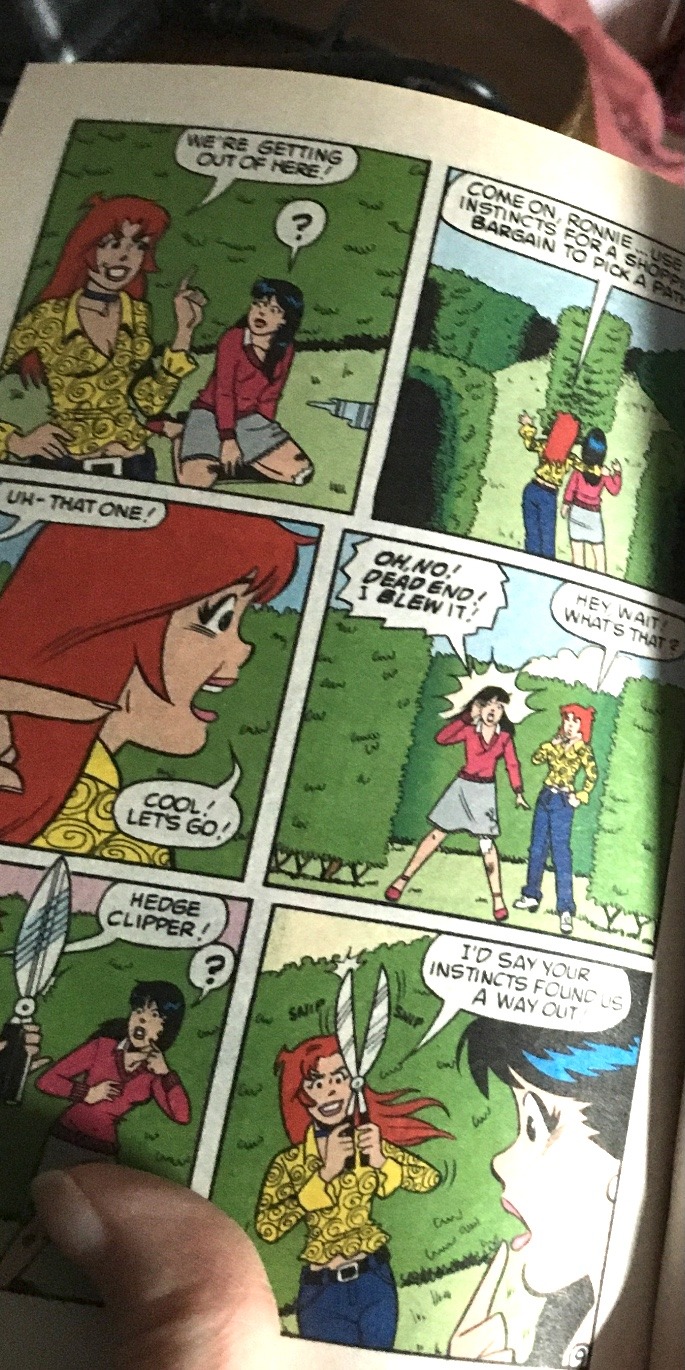


Cheryl changing the Cherry Blossom Festival to the Cheryl Blossom Festival

Archie doing his classic Valentine's Day mix up
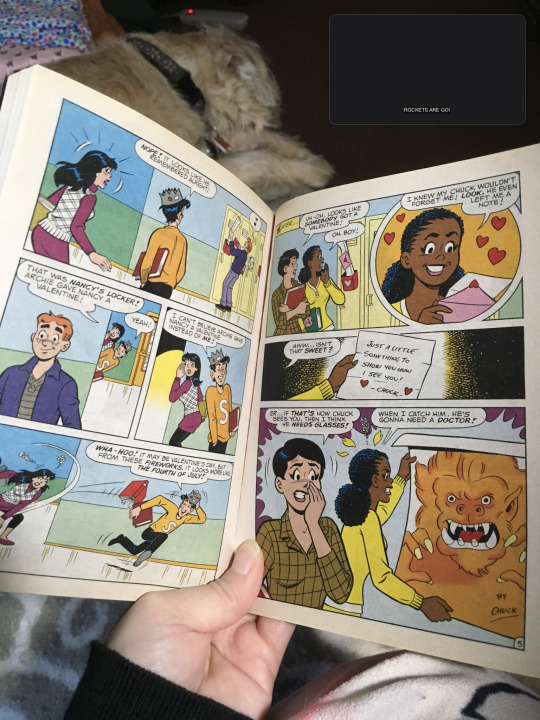
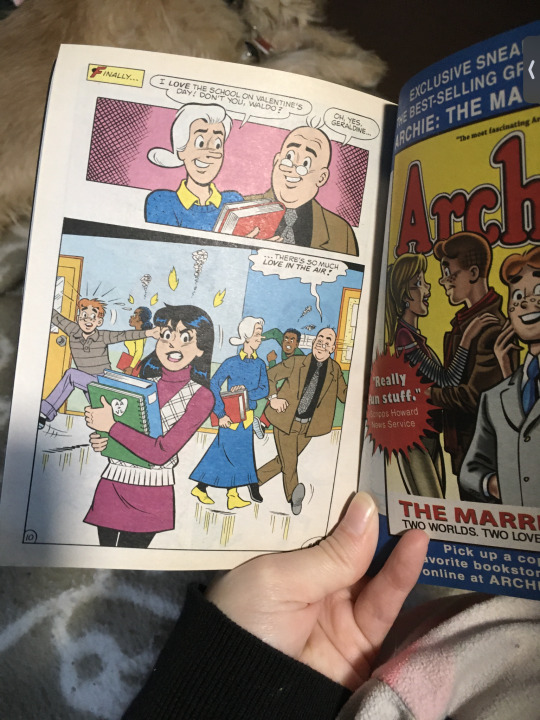
Veronica and Betty buy Cheryl’s maid service when her father forces her to get a job.
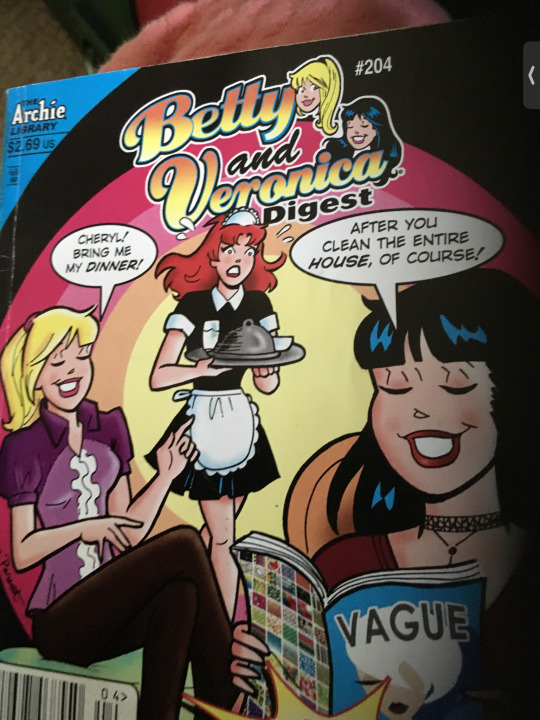
Jughead and Trula (Jughead's nemesis & psychoanalyst in training) get amnesia and become friends.
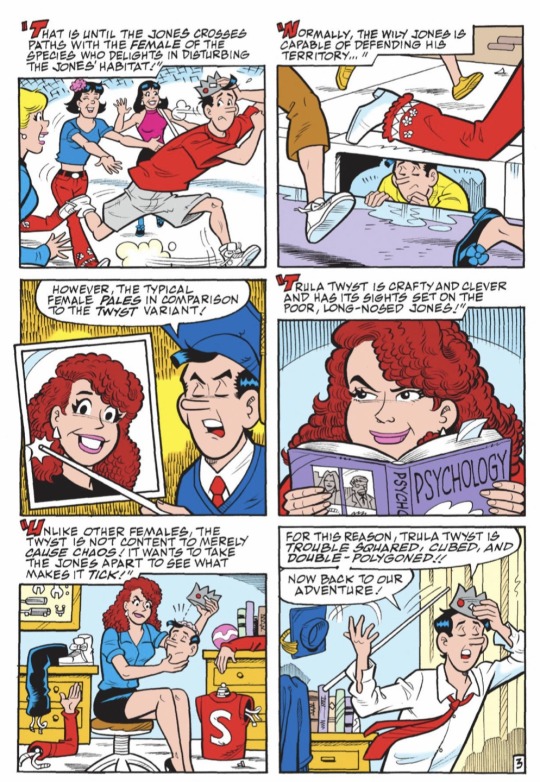
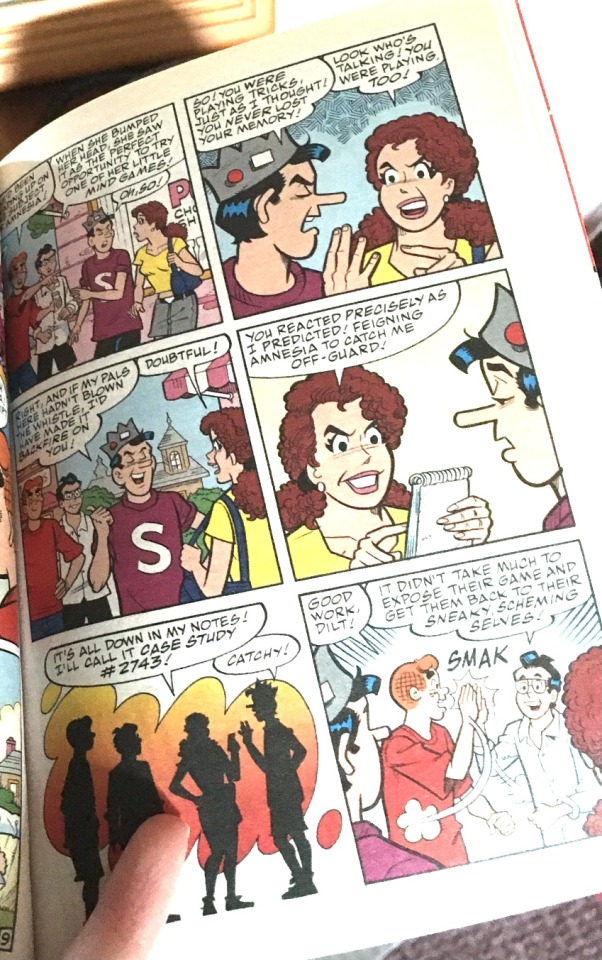
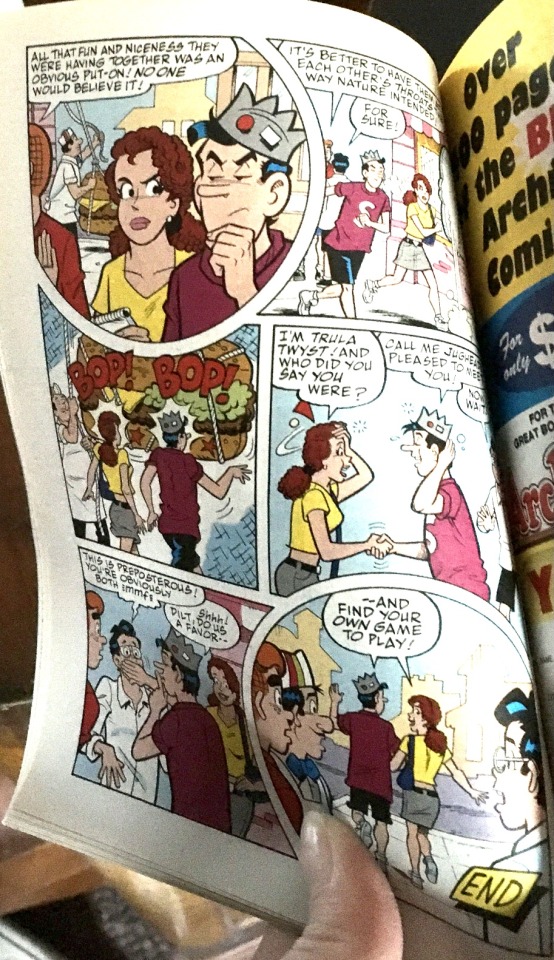
A boy dares to change Veronica
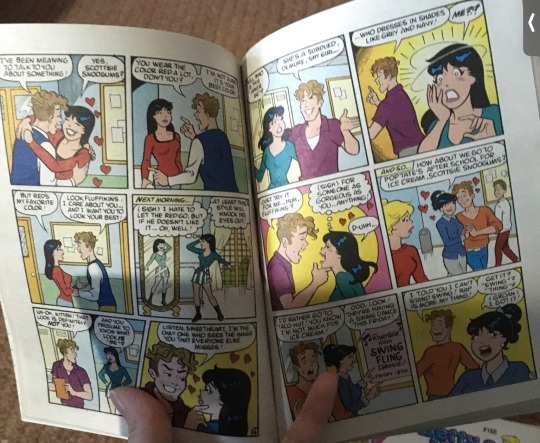

Jughead falls in love with the lunch-lady
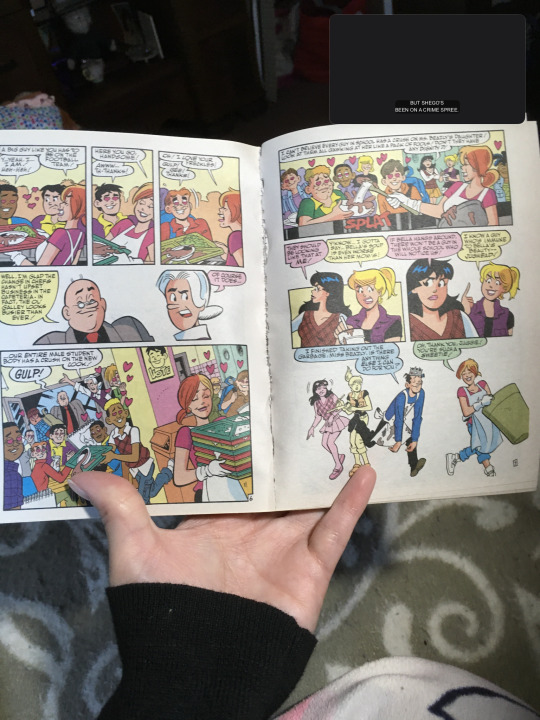
Betty and Veronica pretending to be distressed damsels to get Archie's attention (it backfires)

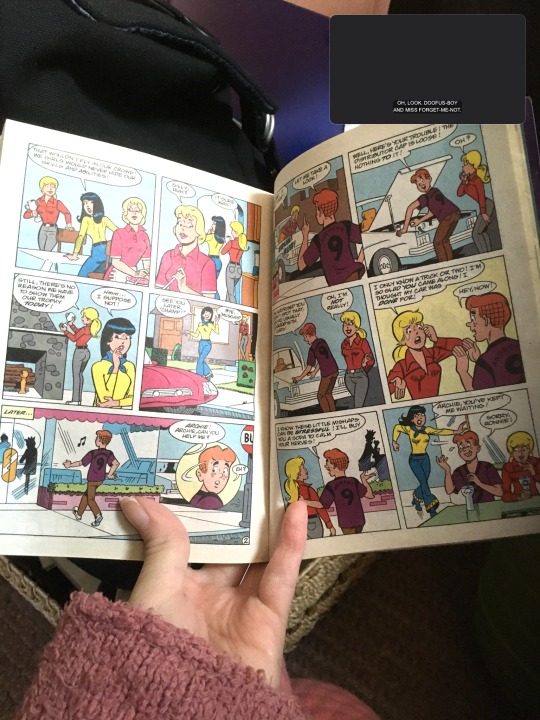
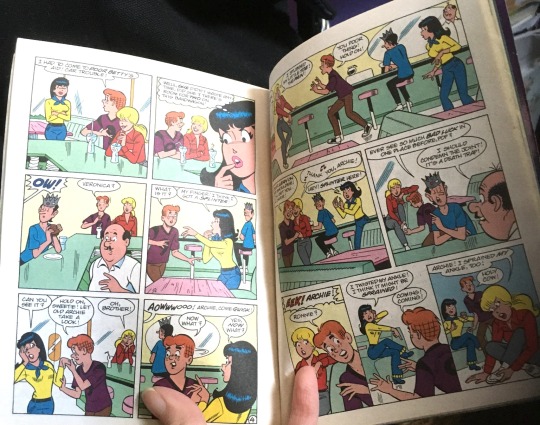

Toni and Jughead foil each other in a food eating contest.
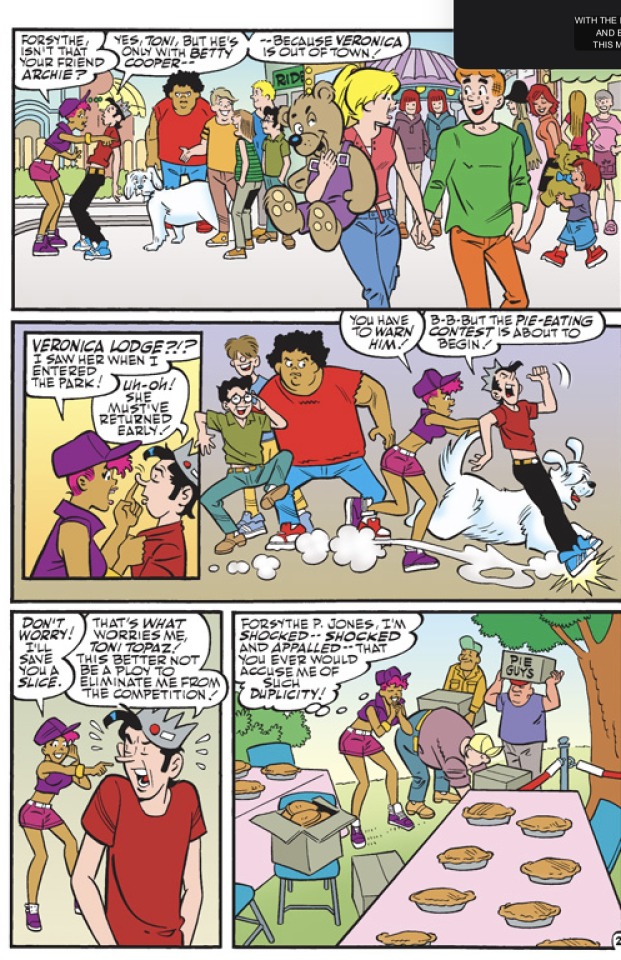
Betty's cast causes more pain to other students
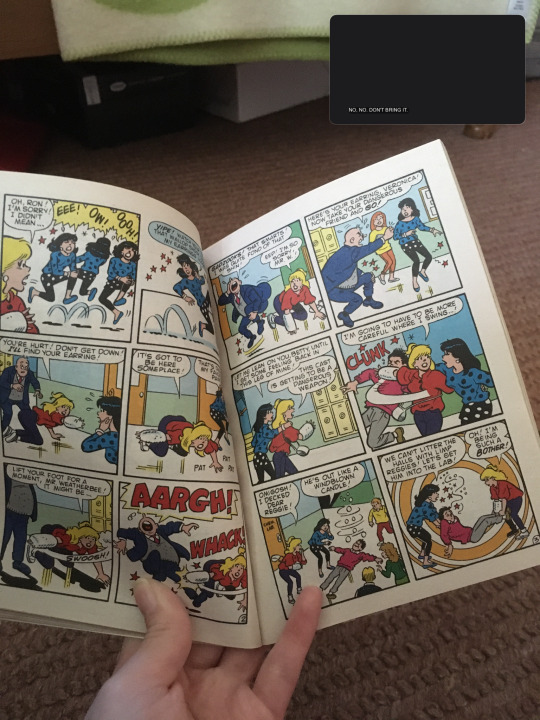
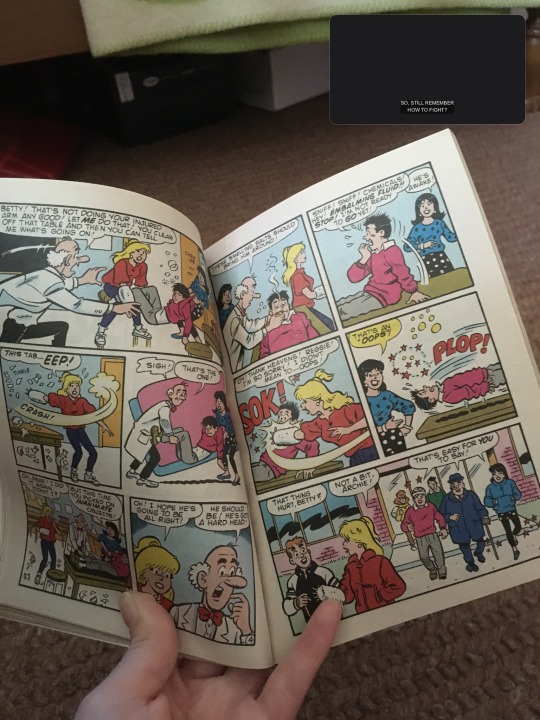
Reggie dates Cheryl (for real)
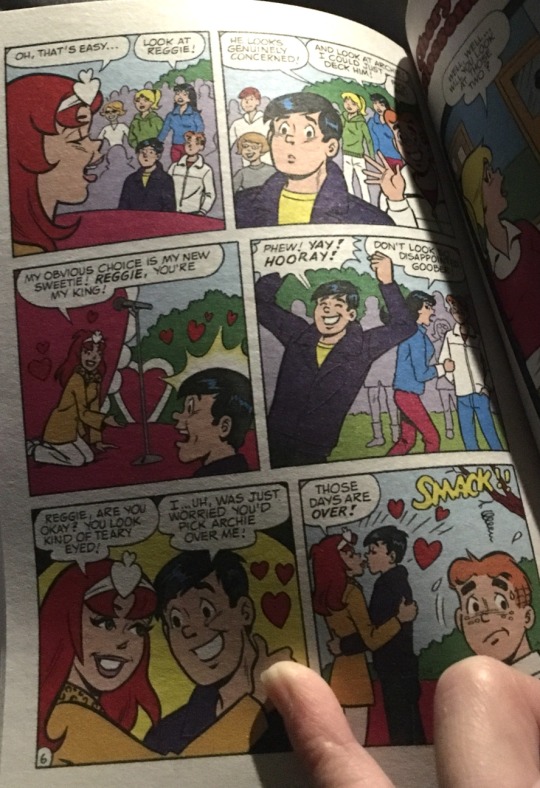
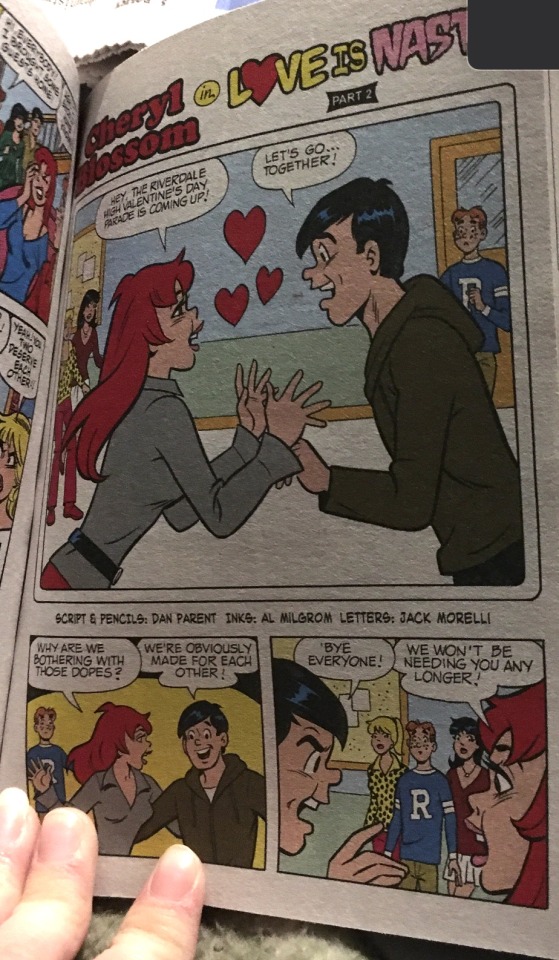
Reggie helps Kevin dress for the dance and his mystery date

Riverdale Shore.

Cabot vs Lodge




I think all this pretty much illustrates my point. Archie comics equals Disney sitcom all by itself.
21 notes
·
View notes
Text
NATALIE SCHAFER
November 5, 1900

Natalie Schafer was born in 1900 in Red Bank, New Jersey, although some sources say New York City. She is best remembered as Lovey Howell, the millionaire’s wife, on “Gilligan’s Island.”
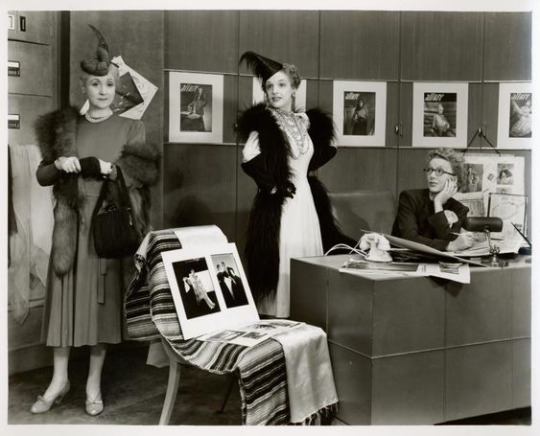
Schafer began her career as an actress on Broadway appearing in 17 plays between 1927 and 1959 including runs in Lady in the Dark (1941–42, above), The Doughgirls (1942–44), and Romanoff and Juliet (1957–58).
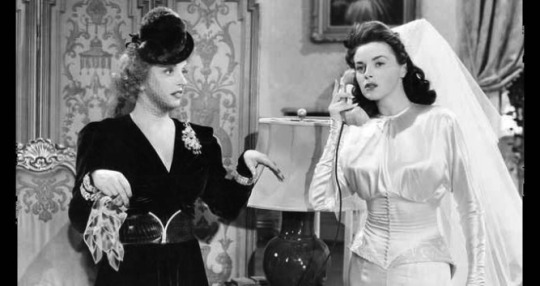
In 1941 she started doing films with The Body Disappears starring Jane Wyman and featuring “Lucy” players Edward Everett Horton and Dick Elliott.
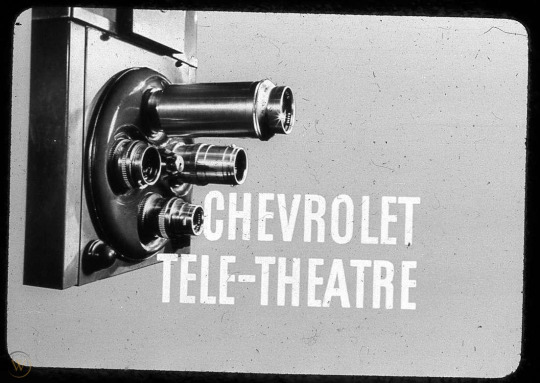
She re-teamed with Horton for her TV debut in 1948 with an episode of the anthology series “Chevrolet Tele-Theatre”.
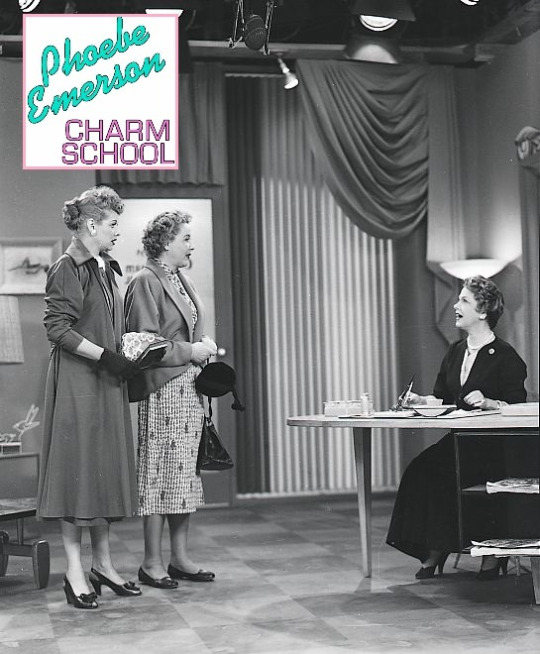
In 1954, Schafer made her only appearance on “I Love Lucy” in “The Charm School” (ILL S3;E15). Lucy and Ethel visit Phoebe Emerson Charm School for a free Beauty Analysis and CQ (Charm Quotient) check-up. Miss Emerson grades on four points: skin & make-up, hair, voice, and posture.

Lucy and Ethel are then put through an exercise and posture regimen. Sadly, much of the scene was cut in the final edit. Only still photos remain. The week before this episode first aired, Schafer made an appearance on CBS TV’s "Topper” as a character named (coincidentally) Mrs. Vance.

Two years later Schafer co-starred in Lucy and Desi’s film Forever, Darling (1956) as Millie Opdyke. The film also featured her ex-husband, Louis Calhern and another future sitcom star Nancy Kulp, who also played a maid on “I Love Lucy”. Kulp went on to create the role of bank secretary (like Lucille Ball herself) Jane Hathaway on “The Beverley Hillbillies” on CBS.

In April 1964, Schafer re-teamed with Kulp as guest-starred on “The Beverly Hillbillies” playing dress shop owner Madame Renee. The episode also featured Tropicana maître ‘d Maurice Marsac.

In 1960, she was back at Desilu Studios to film an episode of ABC’s “Guestward Ho!”, a series that was originally supposed to star Vivian Vance.
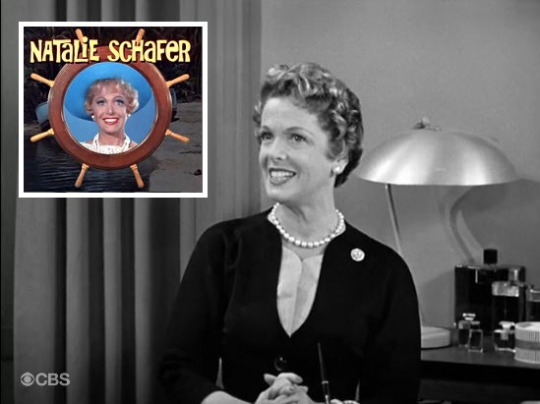
On September 26, 1964, Schafer first played the role she would forever be identified with, Mrs. Howell on “Gilligan’s Island” appearing in all 99 episodes of the original series (including the un-aired pilot), which completed its run on Boxing Day 1966. The character of Ginger, the movie star castaway, was described during casting as a combination of Lucille Ball and Marilyn Monroe. Series creator Sherwood Schwartz was a Lucy fan. His brother Elroy Schwartz actually wrote scripts for Lucille Ball.
Lucille Ball also employed many of the denizens of “Gilligan’s Island”: Alan Hale Jr., Janos Prohaska, Mel Blank, June Foray, Vitto Scotti, Hans Conried, John McGiver, Phil Silvers, Don Rickles, Stanley Adams, Roy Calhoun, Strother Martin, Herb Vigran, John Gabriel, and Sandra Gould.
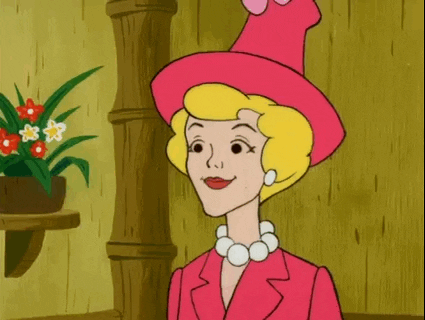
Schafer returned to the character for each of its future iterations:
“The New Adventures of Gilligan” (1974)
“Rescue from Gilligan's Island” (1978)
“The Castaways on Gilligan's Island” (1979)
“The Harlem Globetrotters on Gilligan's Island” (1981)
“Gilligan's Planet” (1982)

In 1972 she did a guest shot on “Mannix”. The series was originally produced by Desilu. In 1971, “Here’s Lucy” featured Mannix (Mike Connors).

Her final screen appearance was in the TV film I’m Dangerous Tonight, released just months before her death.

Schafer was married to actor Louis Calhern from 1933 to 1942; they had no children. Calhern had worked with Lucille Ball in The Affairs of Cellini (1934) and Forever, Darling (1956).

Although her contract included forbid close-ups, she insisted that her obituary disclose her real age. She said she wanted people to say "she was HOW old?!”
Natalie Schafer died in 2001. She was 90 years old.

#Natalie Schafer#Lucille Ball#I Love Lucy#Gilligan's Island#Vivian Vance#Charm School#Phoebe Emerson#I'm Dangerous Tonight#Mike Connors#Mannix#Guestward Ho!#Beverly Hillbillies#Nancy Kulp
4 notes
·
View notes
Text
The Umbrella Academy Season 2 Complete Easter Egg and Reference Guide
https://ift.tt/eA8V8J
The following contains spoilers for The Umbrella Academy season 2.
The Umbrella Academy wears its influences on its sleeve. Gerard Way and Gabriel Bá’s original comic and the Netflix series it was adapted into pay a great debt to properties like X-Men, Doom Patrol, and even The Royal Tenenbaums.
Now for its second season, The Umbrella Academy is even more devoted to Easter eggs, references, and many other real life and pop culture homages. This batch of episodes takes the Hargreeves family back to the early ‘60s where they encounter a whole new host of inspirations.
“There are tons,” showrunner Steve Blackman says of season 2 Easter eggs. “We specifically wanted to sit down and say, ‘Here are the Easter eggs we want to put in, let’s make a list of them.’ They’re everywhere. I think the fans will get a real kick once you start realizing what we’ve put in.”
Follow along with us as we catalogue every possible Easter egg and reference in The Umbrella Academy season 2. Hopefully we can clarify a thing or two about this season along the way. And hopefully you, dear reader, can help point out what we surely missed.
The Umbrella Academy Season 2 Episode 1: Right Back Where We Started
This episode takes its name from Maxine Nightingale’s “Right Back Where We Started From.” And indeed that song plays as the Hargreeves family arrives in the ‘60s and tries to acclimate to their surroundings.
The season opens with the lunar-induced apocalypse that kills billions of people on Earth. The world’s destruction was essentially confirmed at the end of The Umbrella Academy season 1 but is re-confirmed here. In the original comic book, the planet is destroyed midway through volume 2 “Dallas” when Hazel and Cha-Cha detonate a nuke they stole from Reginald Hargreeves’s stash. Thankfully in this season, just as in “Dallas,” The Umbrella Academy makes it safely back in time and gets a chance to undo things.
For organizational purposes here is where each member of The Umbrella Academy lands in the early 1960s, along with what movie is playing on the local cinema’s marquee:
February 11, 1960 – Klaus and Ben – The movie is Curse of the Undead.
1961 – Allison – The movie is The Curse of the Werewolf.
1962 – Luther – Movie not visible.
September 1, 1963 – Diego – Movie not visible.
October 12, 1963 – Vanya – The movie is Kiss of the Vampire.
November 25, 1963 – Five – Movie is still Kiss of the Vampire.
The song playing during this latest apocalypse is Frank Sinatra’s “My Way.”
This thrilling series finale-esque apocalypse sequence also provides viewers with a decent reminder of what each Umbrella siblings’ power is:
Vanya uses sound to generate enormous, explosive power.
Klaus can communicate with the dead and in this instance is even able to summon the ghosts of U.S. soldiers to do battle against the Soviets.
Luther is super strong. And surprisingly flame retardant.
Ben (still dead) is able to produce monstrous tentacles from his stomach. In the comic series it is explained that he summons monsters from another dimension.
Allison quite literally possesses the power of suggestion. Her phrase “I heard a rumor” bewitches whoever hears it to do what she says.
Diego is super accurate with knives and seemingly takes his combat training more seriously than anyone in the Academy. In the comics, Diego is able to survive without breathing but for the second season in the row that appears to have not made it to the TV show. “You got Jason Momoa doing that a hundred times better anyway,” David Castañeda told Den of Geek during a set visit.
Number Five can travel through time but obviously rather imprecisely. He uses that power on a smaller scale to pop through space-time during fist fights.
Hazel makes his triumphant and brief return to the series…looking somewhere between Nick Offerman and Gandalf. He likes to call Five “old-timer” because despite having his childhood body, Five is actually in his late ‘50s.
This time around, the world will end on November 25, 1963 – notably three days after the assassination of President John F. Kennedy in Dallas.
Diego trots out a Star Wars joke about Luke Skywalker’s daddy issues that obviously no one in the asylum is able to understand, with Star Wars 14 years away from release.
Diego’s friend at the hospital is new character Lila, played by Ritu Arya. Lila has no comparable character in the comic series and is purely a show invention. Arya is best known for her work in Humans and Last Christmas.
Klaus and Ben were in San Francisco for three years before heading back to Dallas. In that time, Klaus started a cult. California was a hotspot for cults in the late ‘60s and early ‘70s. Klaus was a little ahead of the game.
Allison is preparing to participate in a sit-in with her Black peers. As early as the ‘40s but chiefly during the ‘50s and early ‘60s, sit-ins were tactics used by Civil Rights organizers in which protesters would occupy an area and refuse to move. Some of the most famous sit-ins involved Black Americans sitting at lunch counters or tables in all-white restaurants and requesting service. As Dan Fienberg points out in his season 2 review, Civil Rights organizers had largely ceased this practice by 1963.
The song playing during Diego’s time in isolation is a cover of Gnarls Barkley’s “Crazy” by Daniela Andrade.
The song playing as Diego and Lila escape is “Comin’ Home Baby” by Mel Tormé.
Luther is working for Jack Ruby – an unlikely important figure in American history. Ruby was a well-known nightclub owner in Dallas who was tied to mob activities such as illegal gambling, drugs, and prostitution. On November 24, 1963 (one day before the world “ends”), Ruby approached JFK’s killer Lee Harvey Oswald as police were escorting him from prison to court and fatally shot him at close range.
The Umbrella Academy Season 2 Episode 2: The Frankel Footage
The title of this episode is clearly a take on “The Zapruder Film.” The Zapruder Film is footage of the JFK assassination recorded by Texas clothing manufacturer Abraham Zapruder. It is believed to be the most complete visual documentation of the JFK assassination and was used by the Warren Commission that investigated the asssassination. It’s also become fodder for conspiracy theories.
In the reality of The Umbrella Academy, The Frankel Footage is what Hazel slipped into Five’s pocket before he died. It documents JFK’s motorcade from the perspective of Dan and Ethel Frankel on Dealey Plaza. The Frankel Footage uncovers none other than Reginald Hargreeves holding an umbrella on the grassy knoll.
Interestingly, “The Umbrella Man” is a real figure in the complicated lore of the JFK assassination. A figure holding a black umbrella appears in the Zapruder film and at one point spins his umbrella as the President’s motorcade passes by. This led to theories that, among other things, the umbrella man was a CIA plant who signaled to Lee Harvey Oswald via his umbrella to fire the fatal shots. In reality, the Umbrella Man was discovered to be Louie Steven Witt in 1978. Witt said he brought the umbrella to the motorcade to heckle Kennedy. Kennedy’s father Joe had been a fan of Nazi-appeasing British Prime Minister Neville Chamberlain. A black umbrella was Chamberlain’s trademark accessory.
The Handler lives! A bullet to the head doesn’t do as much damage as one would think on The Umbrella Academy. “Bibbidi-Bobbidi-Boo” from Cinderella plays as The Handler is spared from the incinerator.
The Handler’s boss at the Commission is a goldfish in a tank atop an otherwise human body. His name is “A.J.” and later on it’s revealed his last name is “Carmichael.” This comes directly from The Umbrella Academy comic where the head of the “Temps Aeternalis” is revealed to be a shubunkin goldfish named Carmichael.
“Well it finally happened – that gorilla DNA took over your mind,” Five tells Luther. This quick aside confirms that Reginald utilized gorilla DNA to save Luther’s life after a mission gone wrong.
“Who’s Diego?” Elliot (Kevin Rankin) asks Five. “Imagine Batman and then aim lower,” Five responds.
When Klaus meets one of his old followers in a holding cell and the follower asks for words of wisdom, Klaus replies with “Don’t go chasing waterfalls. Stick to the rivers and the lakes that you’re used to.” This is a lyric from TLC’s 1995 song “Waterfalls.”
All the “Children of the Prophet” have “Hello” and “Goodbye” tattooed or scribbled on either palm. This is in reference to Klaus’s tattoos of the same nature. In the comics, Klaus’s callsign is “The Seance” and those tattoos mimic the setup of most Ouija boards.
Reginald Hargreeves owns D.S. Umbrella in Dallas. We see him open this business in the enigmatic opener of The Umbrella Academy season 1’s final episode. That episode also seemed to suggest that he’s an alien.
Baby Pogo makes his first appearance! Pogo is a chimpanzee with the intelligence of a human. He was Hargreeves’s steadfast friend and probably the only positive influence in the young Hargreeves children’s lives. He was killed by Vanya in season 1.
Five finds an invitation to Hargreeves from the Consulate of Mexico and one Mr. Hoyt Hillenkoetter. Roscoe Henry Hillenkoetter was the first director of the CIA in real life.
The song playing as Diego fights his father is “I’m a Man” by Spencer Davis Group.
The Umbrella Academy Season 2 Episode 3: The Swedish Job
“The Swedish Job” is likely a reference to the classic ‘60s action film (and its 2003 remake) The Italian Job.
Let’s talk about The Swedes a little more. The Swedes are not present in the Umbrella Academy comic book. They fill a similar role to what Hazel and Cha-Cha do in the second volume of the comic as agents of The Commission (or Temps Aeternalis in the book). But with the show having burned Hazel and Cha-Cha on season 1, it likely needed a replacement here. Most assassins in the Commission are colorful characters so The Swede’s pale weirdness makes enough sense.
“Sunny” by Boney M. plays over the opening montage of Klaus’s time as a cult leader.
Five is tracking soundwaves at Morty’s as that’s a surefire way to find Vanya.
The man holding a “The End is Nigh” sign is certainly an homage to Watchmen. Watchmen was influential for Umbrella Academy writer Gerard Way…and just about everyone else.
The Handler’s outfit as she intimidates a child at a pet shop closely resembles ‘60s fashion popularized by Jackie Onassis Kennedy – fitting given this season’s focus.
Five’s coffee obsession continues apace in this episode.
Klaus meets Dave, the love of his life, at Glenoak’s Hardware. Klaus had previously traveled to the 1960s in season 1 where he joined the Vietnam war effort and fell in love with fellow soldier Dave. Dave obviously has no recollection of it as it hasn’t happened for him yet. Or maybe it never will…time travel is weird.
The song playing at episode’s end is “Golden Brown” by The Stranglers.
The Umbrella Academy Season 2 Episode 4: The Majestic 12
“The Majestic 12” is a real organization…or purported to be real by conspiracy theorists. It’s said that The Majestic 12 was created by Harry S. Truman in 1947 and made up of scientists, military leaders, and government officials to investigate alien spacecraft. Elliot describes the Majestic 12 as a “shadow government.” Of course Reginald Hargreeves would be a part of it.
The Handler recovered young Lila in London, England in 1993. She appears to be about four years old at that time. If so, that would put her birth year at a very significant…1989.
The music budget this season continues to be insane. The song playing as Klaus falls back into alcoholism and addiction is Styx’s “Renegade.” Obviously.
Luther is enjoying some Texas barbecue when he encounters Allison again. This leads to two relevant points.
Texas barbecue is the best in the country.
With Luther’s increased appreciation for food, The Umbrella Academy season 2 is paying slight homage to the comic’s “Fat Luther” storyline. Following the events of the first comic volume, Luther becomes complacent, depressed, and ultimately, obese. “There’s certainly a nod to that in this season,” Tom Hopper told Den of Geek. “There was a question mark over the fact that Thor did the whole thing already (in Avengers: Endgame.”
Diego meets his mother at the swanky Dallas party. When Diego and his siblings knew “Grace,” she was merely a robot created by Reginald. Here she is a living, breathing woman who knows her date by “Reggie.”
Harlan has a sparrow toy. Make note of this as sparrow imagery pops up a few times this season. Birds are all over The Handler’s clothing choices for instance. That ends up being tremendously relevant to the conclusion of season 2.
Sissy and Vanya share a kiss and then more. Vanya is the second confirmed LGBTQ Umbrella Academy member. “Having that be such a big part of the show and Vanya’s life is exciting for me,” Ellen Page told Den of Geek.
Luther just flat out loves drugs now. After his LSD trip in season 1, he follows that up with nitrous this season. That leads to this hilarious exchange with Elliot:
“My dad died too. He left me on the moon.” *howling, uncontrollable laughter*
The song at episode’s end is “I Was Made For Lovin’ You” by KISS.
The Umbrella Academy Season 2 Episode 5: Valhalla
The episode’s title is named after “Valhalla,” a majestic hall ruled over by Odin in Asgard in Norse mythology.
Poor Pogo was a space monkey. The United States, U.S.S.R., and France launched dozens of primates into space from 1948 through 1996 (!!!) to test space flight’s effects on humanity’s close cousins. When Pogo’s space flight went poorly, Reginald appears to have resurrected him with a similar serum to which he gave Luther. Is it possible that Luther got gorilla DNA and Pogo got human DNA?
Luther took a bus trip to see his father in the ‘60s. And the map that displays Luther’s trip offers up an interesting clue as to the whereabouts of The Umbrella Academy. The Umbrella Academy is filmed in Toronto though it’s never mentioned what city Toronto is standing in for in the show. In the comics it’s known as only “The City.” Here, Luther’s bus ride seems to end around Indianapolis of all places. It seems as though The Umbrella Academy is in the Midwest.
Ambrosia was a gelatinous fruit salad popular in the ‘60s. It was and is an affront to humanity.
The team’s breakdown of the many ways they could have destroyed the timeline is amusing to say the least:
“Diego has been stalking Lee Harvey Oswald.” – Luther
“You’ve been working for Jack Ruby!” – Diego
“Allison has been very involved in local politics.” – Klaus
“Ok, you started a cult.” – Allison
“I’m just a nanny on a farm. I don’t have anything to do with all of that.” – Vanya
“Face it. The only healthy relationship in this family is when Five was banging that mannequin,” Klaus says. This is a reference to Five’s mannequin lover, Dolores, from his time alone in the post-apocalypse future.
Klaus, Allison, and Vanya dance to Sam Cooke’s “Twistin’ the Night Away.”
The song playing as Five and Lila fight is a ska cover of Billie Eilish’s “Bad Guy” by The Interrupters.
The song playing as the two surviving Swedes consign their fallen brother to Valhalla is a cover of Adele’s “Hello” by Swedish artist My Kullsvik.
The Umbrella Academy Season 2 Episode 6: A Light Supper
Reginald invites his “pursuers” to 1624 Magnolia Street, Dallas. This address appears to be a parking lot currently.
“So there was a Black president?” Raymond asks Allison of the future. There was indeed, Ray.
“Hold on I’m Coming” by Sam and Dave plays as Allison and Ray have their day out on the town.
“Sixteen years in the grave and you finally turned into your father,” Klaus tells Ben. Given the Hargreeves’s 1989 birth year and 2019 current year of the show, Ben must have been around 14 when he died.
Dave has already signed up for the Army ahead of schedule, suggesting that the Hargreeves’ presence in 1963 really is altering the timeline.
The song playing as the Hargreeves approach their Tiki Lounge meeting is “The Order of Death” by Public Image Ltd.
Ben can now officially inhabit Klaus. This is an evolution of Klaus’s power of being able to communicate with the dead. Robert Sheehan said of this development: “(Klaus) can’t be as selfish anymore because (Ben) has this thing over me that he can do. We have a lot of fun with it and stuff, but it’s kind of about sobriety. I think Klaus and Ben’s relationship is entirely about sobriety versus addiction, for somebody who’s lived with addiction for so long.”
As Five will tell Luther and Diego in episode 7, Öga for Öga is Swedish for “An eye for an eye.”
The Umbrella Academy Season 2 Episode 7: Öga for Öga
A candy bar in the vending machine in 1982 Oshkosh, Wisconsin is a “Pogos-Gogos.” Pogo was likely a famous pop culture figure due to his space flight…and ability to speak English.
When Five takes an axe to the Commission executive board in 1982 Wisconsin, it’s hard not to think of American Psycho. Aiden Gallagher is a dead ringer for a young Patrick Bateman.
The song playing as Ben experiences life in Klaus’s body is “Sister of Pearl” by Baio.
We find out the name of Klaus’s cult is “Destiny’s Children.” Klaus is really working his knowledge of ‘90s R&B groups here.
The song playing as Allison battles The Swedes is “Everybody” by Backstreet Boys.
“I heard a rumor you killed your brother,” Allison tells one of the two remaining Swedes. It’s not clear why she assumes that they are brothers. But the fact that the lead Swede follows through means that Allison was correct. Otherwise The Swede would have hopped on a plane to seek out his real brother to kill.
“It was a simple task – just be here! We didn’t have to kill a giant sea serpent, fight off an army of mutants,” Five says of his team’s failure to rendezvous at the right time to escape the ’60s. The “kill a giant sea serpent” could be a reference to a brief moment in the comic’s one-off issue “But the Past Ain’t Through With You.” Sometime in the past, The Umbrella Academy defeated a sea serpent that attacked Japan because it was insulted that a toy-maker make unlicensed plush toys of it.
The Umbrella Academy Season 2 Episode 8: The Seven Stages
The FBI does have an office in Dallas but it’s about 10 miles away from Dealey Plaza and not directly behind the grassy knoll as depicted here. Or at least that’s what they want you to think…
Vanya is able to reflexively answer the FBI questioner back in Russian because Reginald Hargreeves was a strict teacher of foreign languages to The Umbrella Academy.
Grace finds photos of Fidel Castro, Lyndon B. Johnson, JFK, and a map of his motorcade route in Reggie’s files. This is a clear indication to her that Reggie is involved in an upcoming attempt against the President’s life. Grace also sees plans for a “televator.” This is the elevator teleportation device Reginald will one day build.
There are five stages of grief but apparently seven stages of side effects from confronting one’s self in the same timeline. Five lists them out thusly:
1. Denial
2. Itching
3. Extreme Thirst and Urination
4. Excessive Gas
5. Acute Paranoia
6. Uncontrolled Perspiration
7. Homicidal Rage
As Vanya begins her LSD trip, the song that plays is “Pepper” by Butthole Surfers. Some of the lyrics are particularly apt for this season – “they were all in love with dying, they were doing it in Texas.”
Diego discovers that Vanya will be the cause of the apocalypse yet again in 1963, which makes an argument that The Umbrella Academy operates under Devs-style determinism.
Around the 23-minute mark someone holding a Cha-Cha mask can be seen off in the distance at Commission HQ. The individual’s face can’t be seen but it’s not out of the question that this could be Cha-Cha. Commission assassins appear to age in an unusual manner. Alternatively this could be an assassin who donned the cartoonish helmet before Cha-Cha. Showrunner Steve Blackman says that either interpretation is valid: “In the Commission, it’s always 1963, but it never changes time. So that very well could have been Cha-Cha holding the mask.”
In her LSD nightmare, Vanya is chastised by Reginald for wanting to live “a silly life on a silly farm.” One of the issues of “Dallas” is titled “A Perfect Life” and deals partly with Luther imagining a tranquil domestic life with Allison.
The Umbrella Academy Season 2 Episode 9: 743
The episode gets its name from the case number in which Five executed Lila’s parents on The Handler’s orders.
Klaus references Antonio Banderas in complimenting Diego’s hair. Diego is legitimately touched.
Much of this episode takes place in or around Dealey Plaza – the location where John F. Kennedy was assassinated. The sections of note in Dealey Plaza are the book depository where Lee Harvey Oswald fired his rifle from and the grassy knoll where some people believe a second shooter shot JFK. The Umbrella Academy doesn’t make a trip to the book depository but does briefly show the grassy knoll with Reggie Hargreeves and his umbrella. Luther and the two Fives spend most of their time in a parking lot behind the grassy knoll.
Fittingly, the song that plays as young Five fights old Five is “Dancing With Myself” by Billy Idol’s band Generation X.
Much of Vanya’s acid trip is set to Bach’s “Partita No. 2 in D Minor” on violin. There is a lot of violin imagery as well. This is fitting given Vanya’s aptitude for the instrument. She receives the villainess name “White Violin” in the comic series.
“Dad treated you like a bomb before you were one,” Ben tells Vanya. The final issue of The Umbrella Academy Volume 1 is titled “Finale, Or, Brothers and Sisters, I Am an Atomic Bomb.”
Ben also tells Vanya he died “17 years ago” which seems at odds with Klaus’s declaration that Ben died “16 years ago.” Klaus and Ben have been in Dallas for three years though, so Ben died 19-20 years ago, depending on who is right. The year is also 1963 so Ben technically won’t die for another 42 or 43 years. Time travel is weird.
Luther and Young Five send Old Five back to the very start of The Umbrella Academy series, which avoids a truly mind-bending number of paradoxes.
Though it was teased in the show’s first season, Reginald Hargreeves reveals himself to be well and truly an alien in the final moments of this episode. Reggie unzips his skin mask, discards it, and then violently murders his Majestic 12 colleagues at the Tiki Lounge for them killing Kennedy against his wishes. This is a bit of information that the comic book is shockingly upfront about, casually revealing on the series’ second-ever page that Hargreeves is an alien and never addressing it further.
Before they’re slaughtered, the Majestic 12 claim that Reggie has interests on the dark side of the Moon. Perhaps Luther’s trip to the moon wasn’t pointless after all.
The episode concludes with a new song from Umbrella Academy creator and My Chemical Romance frontman Gerard Way called “Here Comes the End.”
The Umbrella Academy Season 2 Episode 10: The End of Something
This is the first time we’ve seen Ben’s funeral. His little casket is covered with squid iconography – a tribute to his power.
The Umbrella Academy are now all suspects in JFK’s death. That’s bound to change the timeline, right? Indeed it probably does based on this episode and the season’s conclusion. It’s also interesting just how inherently suspicious each member of the Umbrella Academy would be to 1963 society. Vanya has an Eastern European-sounding name and can speak Russian. Diego is Cuban. Allison is a Black revolutionary. Luther is an enormous bare-knuckle brawler. Klaus is a cult leader. All intimidating stuff.
The army of Commission goons that The Handler summons to take care of the Umbrella team is full of colorful masks and helmets a la Hazel and Cha-Cha.
On our set visit for The Umbrella Academy season 2, Five actor Aiden Gallagher revealed that several characters would discover “sub-powers” Gallagher said: “I was talking to Steve (Blackman) about this, and how it works is in season one, we sort of get hints about all the characters powers and in season two, we really see more so the extent how far that can go. How different elements of each character’s powers actually means that they have this sub-power.” Diego seems to come across a subpower in this final battle when he appears to be able to stop bullets. Blackman explains the power thusly:
“If you think about Diego’s power, he can, with his mind, control trajectory of objects. Basically he likes throwing, so he can throw his knife and he can make it go in weird, odd curvatures and directions. All of them stopped their training in their adolescence when the family broke up, and they are still learning about their powers and their powers are still evolving. As I go through seasons we’ll see more of that. But moving a knife through the air – an extension of that is then being able to manipulate bullets through the air.”
Speaking of powers, Lila appears to have…well, all of them. Lila displays Vanya’s power, Allison’s power, and Five’s power in fights with each of them. But as Klaus, likely correctly, theorizes later, Lila can only mirror one of their powers at a time. Her ability is mimicry. Diego surmises that this means Lila is one of them – one of the 43 children born on October 1, 1989. That’s why The Handler went out of her way to kill her parents and adopt her.
Allison leaves a letter for Ray in a copy of Jules Verne’s From the Earth to the Moon. A fitting book for the story of The Umbrella Academy and this season.
The song playing during the closing montage is a cover of Chris Isaak’s “Wicked Games” by Parra for Cuva featuring Anna Naklab.
Luther calls Jack Ruby, presumably to convince him not to kill Lee Harvey Oswald. But Jack has already picked up his gun.
Ah, The Sparrow Academy. We delved deep into what the ending of The Umbrella Academy season 2 means over here. For now, know that The Sparrow Academy is likely lifted from Volume 3 of The Umbrella Academy comics, “Hotel Oblivion.” We say “likely” because the team doesn’t have an official name but it does invoke a lot of Sparrow imagery. The Sparrow Academy turns up at the very end of volume “Hotel Oblivion.” In the show, The Sparrow Academy seems to exist in an alternate universe created by The Umbrella Academy’s actions in Dallas. In the comic, it is implied that they are simply seven other extraordinary children born on October 1, 1989. This could prove to be the case in the show as well…save for Ben Hargreeves, who we are obviously already familiar with.
The post The Umbrella Academy Season 2 Complete Easter Egg and Reference Guide appeared first on Den of Geek.
from Den of Geek https://ift.tt/33f83kO
5 notes
·
View notes
Note
"Chris leaning away with his arms crossed is body language they should be looking at.' OK but that particular gif shows Chris perfectly still and not leaning in any direction? As to crossed arms, he's done that when Darren is nowhere to be seen. Here he's in a video with Adam Lambert who he seems to love, yet he has arms crossed and not looking at him (at 1:49). So, let's not over-analyze stuff to make it fit some assumption or other. youtube*com/watch?v=r7hGuKbkIyE
First I want to begin by saying that I didn’t go looking to overanalyze Chris/ Kurt. These are moments that immediately stuck out to me because Kurt/ Chris was so disengaged and uncomfortable that I felt uncomfortable and I wanted to figure out what made me feel that way.
This got LOOOONNNNGGGGGG
I have talked about this before but Chris was clearly over Glee, Klaine or both beginning sometime in Season 3, worsening until the final episode. My love for Klaine comes from canon Season 2 Glee and the abundance of amazing Klaine fanfiction. Season 2 Glee was still well-conceived and well written and Chris was having a great time both onscreen and with the press. But something changed in Season 3- the writing became inconsistent, soaring to greatness, The First Time and plummeting to the abysmal Previously Unaired Christmas. Fanon Klaine was able to avoid the pitfalls of the writers and Chris’s angst.

As for the BTS Broadway quiz, Chris is definitely leaning away from Darren. He’s sitting as far to the right as the chair will allow and leaning ever so slightly beyond that.
Many of the BTS interview Chris did with Darren give me the same feeling that Chris was uncomfortable and guarded. My gut reaction each time I watch those specific interviews is always the same, I am instantly uneasy. But I felt the same unease because Chris was uncomfortable when Kurt and Blaine showed any kind of intimacy after season 2. Darren’s Blaine was always all in. Darren is a great on-screen kisser. He always portrays the kiss as passionate whether he is kissing Kurt or Imogene. Chris on-the-other-hand was all in for their first kiss in Original Song but after that Kurt was progressively more uncomfortable and stiff, his walls up, leaving the kisses feeling forced and uncomfortable. I talk about each below.
Let’s talk about your point that Chris crossed his arms when he was with Adam. The link you provided (the entire video is at the end of the post):
This is from the very first few moments

Chris is comfortable- he is leaning TOWARD Adam and he’s engaged.
He chats and jokes during the entire piece.
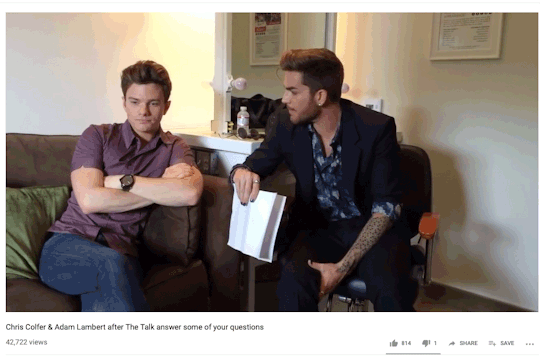
Here they are at 1:49 as you recommended. He has crossed his arms however he is comfortable, he is still leaning toward Adam, he’s open and engaged.
Here he’s leaning (it is subtle) to the right of the chair-he’s as far away from Darren as the chair allows. His legs are crossed away from Darren, he’s closed off and only responding to Darren’s shenanigans. He isn’t engaged at all to begin. He does warm up a little. He cracks a smile and lets his arms go.

This wasn’t he only BTS interview that felt forced to me but I can’t find the one where they shot each other with Nerf guns…. anyone? If this was the only interview where Chris felt closed off I would agree it is over analyzing, but it isn’t. It is one of many.
Sometime during Season 3,something changed. Kurt became progressively more distant, his walls are up and he isn’t at all engaged in the scene work with Blaine, especially if he has to show intimacy. I couldn’t say whether he was over Klaine or he was over Glee or both. Several anons with Glee connections have told me that Chris was not happy with doing any BTS interviews and one person I know and trust implicitly has confirmed that he had be forced to do A Wedding BTS with Darren. During that interview, Chris isn’t as closed off physically but he isn’t having any of the romantic reminiscing about Klaine. He is harsh. He calls Klaine a disease, says Kurt and Blaine were a modern day Lucy and Ricky then imagines them become Fred and Ethel. He then imagines Klaine were Homeland style with Blaine being kidnapped by terrorists and Kurt going on a mission to rescue him and Blaine’s mom hating him. This is not romantic reminiscing but Klaine gone rogue. He goes on to call Klaine a country in Europe you would rather skip over and talk about how Klaine grew legs of it’s own, how difficult it was to deal with fans, and finally calling the fans and the experience, the Kragen- it can do big things but be a little scary…terrifying. Chris brings the conversation away from Klaine the couple and back to the stories they were able to tell before the couple got together and what is special is the reaction to them.
Some more examples of Chris being uncomfortable and stiff when Kurt should be in love: Kurt has been working to get back together with Blaine for months. They have a flirty song together- a song forced by Kurt manipulating the wheel of fortune -


and as they walk out afterwards, Kurt tries to get Blaine to stay “You sure you have to go, doesn’t sound like we are done in there” Kurt is flirty as they walk. Blaine goes in for a kiss. Kurt is stiff as a board, his arm is almost pushing Blaine away, and he literally leans his entire body back away from Blaine forcing Blaine to lean forward to chase Kurt’s head.

Kurt runs to Blaine’s house to beg him to take him back and he just as uncomfortable as he was after they same and Blaine kissed him. His neck is stiff, his arms are stiff. The only reason this even remotely works is because when Darren kisses on screen he goes ALL IN. He knows how to screen kiss and make it look sexy AF. He did the same thing with Kristen Wiig.
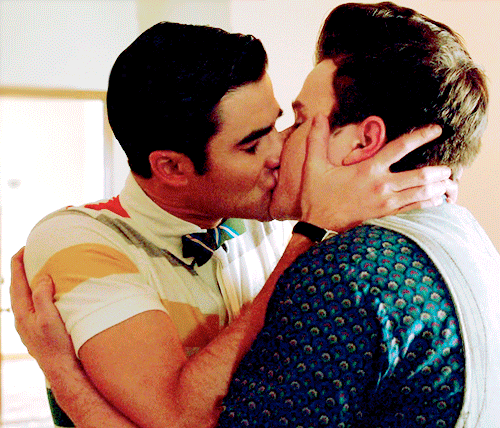

From Kurt’s angle- This doesn’t feel like Kurt is kissing his soulmate, the man he just ran down the street to win back. He lacks commitment and passion.


Now compare the kiss from the two perspective-it’s hard to believe it is the same kiss. Blaine is all passion and commitment. He’s going to devour Kurt. Kurt could be kissing someone during a game of 7 Minutes In Heaven. He’s not committed and can’t wait for it to end…he’s thinking about opening his eyes and counting the ceilings tiles to make the time go faster.

This is no better- he’s still stiff, he pulls back at the beginning and Blaine has to chase his face.
Compared to early Season 3 which is better but not really as hot as it should have been.
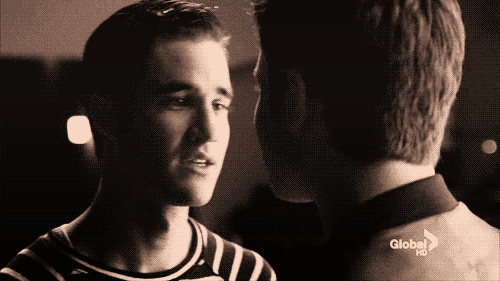
This is the first time I felt something wasn’t right in the kiss…that Chris was holding back and either making weird acting choices or for whatever reason he wasn’t able to let it all go and really be in the moment as Kurt. His arms seem uncomfortable and he doesn’t seem to be invested in the kiss like he should be. But at least Kurt doesn’t pull away and he isn’t as stiff and uninterested as he is in the gifs above.
Look at Season 2 Kurt. For his first kiss he is engaged and passionate; he grabs Blaine’s cheek and kisses back.



When Blaine comes back for a second kiss he is READY.


This is Season 2 happily shocked Kurt.

vs Season 6 shocked Kurt. Season 6 Kurt did not pull off the the-love-of-my-life-just-kissed-me shocked look. It’s more the ewe-someone-i-don’t-like-just-kissed-me. He’s tense, his neck is very tight, his eyes are not even looking at Blaine- he’s looking down whereas in the first kiss his eyes are wide open and following Blaine’s every move.
youtube
youtube
A Wedding Klaine Edits
Outside Rachel’s house
15 notes
·
View notes
Link
April 13, 2018
Lana Parrilla interview pre 7.17
For this Friday’s episode of Once Upon a Time (ABC, 8/7c), original cast member Lana Parrilla found herself behind as well as in front of the camera.
Making her directorial debut, Parrilla helped bring to life a revamped tale of Hansel and Gretel, the former of which we now know to be Hyperion Heights’ Candy Killer. Her first foray into directing also of course came in the nick of time, with just six episodes left in the fantasy drama’s run.
Once Upon a Time: 10 Questions for the Series FinaleLaunch Gallery
Here, in TVLine’s last of so many Q&As over the years with Parrilla, she details how directing played right into her personal wheelhouse, before reflecting — Kleenex alert! — on the end of her reign as Regina fka the Evil Queen.
TVLINE | I have every faith that you went into this so incredibly prepared, but even so, was there anything that surprised you about your directing debut experience?
I mean, I guess what surprised me was I had no idea how much actually goes into making a television show, or a movie, or any sort of production in our industry. I didn’t realize how many times we were going to read the script every single day, with every department, and go through every single detail of it. And I actually really enjoyed that part of it, because I am so detail oriented, and breaking stuff down on that level was a good percentage of the homework. I really, really appreciated how thorough every department was and how detailed everything was. I’d been wearing the actor’s hat for so long, I had no idea there was so much that went into it. Now having worn the director’s hat, I love it. It’s right up my alley. Prep is one of my favorite things to do, so it was really aligned with my process.
TVLINE | What’s a specific level of detail that the director gets involved in that we regular folk might not even consider?
It varies because, as they say, film is the director’s medium, TV is a producer’s medium and stage is the actor’s medium. But what really surprised me was how open my producers were to my ideas — and I came with a lot of ’em. Especially with the gingerbread house and how I wanted the children to look, ideas for Rebecca [Mader]’s look and what happens at the midpoint in the script, and the energy and vibe I was looking for. And also visually what I wanted — color schemes, etcetera, the ambiance and the feel of a place, working with the art department…. I didn’t think that I was going to have as much input, but on Once Upon a Time they trusted me with the creative process more than I thought they would, and I was really taken by that. And very grateful.
TVLINE | Were there any specific directing challenges for this episode? Any stunt work or effects-driven scenes?
Chilton Crane, who plays our Blind Witch, is an older woman, and there was a stunt that she had to perform. I was a bit concerned about her athleticism, whether this was something she had ever done before…. I envisioned the Blind Witch leaping into the air and landing in front of the Wicked Witch and holding a candy cane, threatening to stab her, and I wasn’t sure if Chilton could actually do that. I designed this whole stunt in my head and worked with the coordinator, and while there were a few little things we had to shift, at the end of the day it came together really, really well. I was very pleased, and very impressed with Chilton. She did an incredible job and really hung in there. A total trouper!
TVLINE | As we saw last week, “it’s personal” between Hansel and Zelena. Is that what these flashbacks are about?
Yes, yes. There is a history there which you will see, while we also flash forward to Hansel seeking his revenge.
TVLINE | Henry of course has been abducted. Who all gets involved in that rescue operation?
Well, there’s a few things happening there. The audience knows who the Candy Killer is, but a lot of us still don’t. Regina/Roni and Zelena/Kelly are working together to stop the Candy Killer, and then you also have the other side of it — our detectives are also on the hunt. Rebecca and I have teamed up like Lucy and Ethel. [Laughs] Or maybe we’re a little more Cagney and Lacey!
TVLINE | When I was on set, to hear Rose Reynolds say “Candy Killah” in her English accent, you almost want to meet the guy. She makes it sound adorable.
She’s such a cutie! I love the girls.
TVLINE | I saw the video (embedded above) where you gave a speech to the fans gathered in Steveston watching filming [of Storybrooke scenes], and it was so wonderful. What specifically moved you to do that?
It was my last scene in Steveston [British Columbia], and I was walking over to the green room when I saw this wall of fans. I just stood there for a minute to take it all in, and I felt so thankful and blessed that over the years we’ve had them follow us and be there to love and support us. Sometimes it can be an issue when we’re filming — sometimes we have to shift them around, etcetera — but to have a following like that is really special. I don’t know when that will happen again in my career, so I really wanted to take the time to acknowledge them and thank them. There are a lot of people who come from out of town, from all over the world, they’ve been saving all year to be there and get a glimpse of one of us…. I just thought it was really important to show my gratitude.
TVLINE | Regina has been such a hallmark role for you. Has there been a moment over the past couple of weeks where it really hit you that this was coming to an end?
There have been several. Several, several. In fact, there was one just a few hours ago when I called [co-showrunner] Eddy [Kitsis] at the office on the lot, and on my phone it says “Once,” so I thought, “I’m going to have to delete this number at some point!” — and it hit me again. It has come in waves, and it has been very strange, because it’s so unknown. This has been such a huge part of my life for seven years — Vancouver, the show, the character – so it feels like a big, big loss, a big shift and change. It’s going to take some time to adjust.
I’ve had moments where I was really, really, really down, super-sad and emotional about it, and really felt like, “Oh my God, what’s next? What happens after this?” And I still have moments where I feel that way, but now I’m focused on the positive, which is: How lucky are we to have a show 22 episodes, sometimes 23, run for seven years? That doesn’t happen anymore, and I’m just really grateful.
#ouat spoilers#Lana Parrilla#lana parrilla interview#7.17 chosen#Cast Interviews#matt mitovich#tvline
100 notes
·
View notes
Text
Founding Father: Lessons from Ray Kroc
A look at the life lessons from Ray Kroc - the founder of McDonald's.
I enjoy reading books about entrepreneurs, learning how they created their businesses and navigated their careers. Ray Kroc's Grinding It Out: The Making of McDonald's was a great read in college, instilling the value of the grind. This past weekend, I watched The Founder the movie adaptation written by Robert D. Siegel and directed by John Lee Hancock. But before I proceed....
SPOILERS AHEAD!
The movie starts with the audience cheering Kroc on as this hardworking salesperson grinds his way into a building a national chain. By the end of the movie everyone hates Ray Kroc. He double-crossed his business partners, neglected his wife, and seduced a franchise owner's wife. However he made important business decisions along the way that we can learn from.
Lesson #1: Hard Work
Ray Kroc may have preached persistence in the movie but his work ethic was the most admirable trait. His work matched his aspirations. He was not the type to fade into nothingness. Kroc prioritized work over everything: social status, luxury, even his wives. While a traveling salesman for many years, visiting thousands of kitchens selling paper cups and milkshake mixers, he gained intuition. He may not have been particularly smart, but what he lacked in intelligence he compensated with experience. That experience gave him the ability to dream.
Lesson #2: Vision
Kroc was a mediocre salesperson and barely functioning human being. He didn't have have many redeeming qualities beyond his hard work, but he had vision. Kroc knew from the moment he laid eyes upon the first McDonald's establishment that it was an idea much larger than what Mac and Dick McDonald (McDonald brothers) envisioned. Perhaps that's why the McDonald brothers even gave Kroc the original franchising contract.
Throughout his journey, he encountered many problems. All of his problems shared one trait. They were problems arising from connecting the dots: the dot of where he was versus were he wanted to be. For example, when Kroc needed capital to continue his expansion across the United States, he tried to solve the issue by increasing franchising fees, but was bound by his contract with the McDonald brothers. Luckily he ran into Harry Sonneborn (played by B.J. Novak) and they were able to maneuver around Kroc's contract and gain the capital they needed to expand.
Kroc never lacked vision, only lacked the knowledge of how to get there. As Tony Robbins says, knowing the what and why is more important than how. If you know what you want and why you want it, you can figure out the how to get there.
Lesson #3: Removing Limitations
I have mixed feelings about this last lesson. I agree with the lesson, but not the execution of how Kroc carried it out.
Kroc had many people or situations that placed limitations on his ability to pursue his dream. The first was his wife Ethel Kroc (played by Laura Dem). Ethel wanted a different life, a life of luxury and relaxation. Ethel would have preferred that Kroc retired and spent the rest of his days playing golf instead of sweeping up trash in McDonald's parking lots. She supported him along the way, but in the end she reached the limits of her ambition and began to interfere with his. At that point, Kroc made a swift movement to get a divorce.
The second example of removing limitations was his contract with the McDonald's brothers. He signed the original contract in haste because anything is better than nothing. During his rapid expansion, he felt handcuffed with the McDonald's brothers having no intention of compromising on any part of their agreement. He employed shrewd tactics, but once he retained the upper hand, he strong armed the McDonald brothers in selling.
As I said, I am not a fan of his tactical plays, but the concept remains valid. If something is limiting you from achieving your dreams, remove it. That limitation can be a person, situation, or psychology. Kroc may have had limiting factors, but he forged ahead regardless.
Final Thoughts
I may need to crack open Kroc's book again, especially after watching the movie. We are all too quick to forget lessons of the past. While the landscape has changed, there are some natural rules that still apply. Working hard toward a goal and not allowing anything to block your path is an easy sentence to write, but a much harder way to live.
If you work just for money, you'll never make it, but if you love what you're doing and you always put the customer first, success will be yours.
- Ray Kroc
#mcdonalds#foodforthought#entrepreneur#lifelessons#burgers#frieswiththat#business#strategy#efficiency#grind.#grind#persistence
1 note
·
View note
Text
Blue and Gold - Jughead X Reader Imagaine
[A/N: Yeah so before I went to sleep last night I did kind of have an idea of where this fic would go if it had another part! It’s a little different to what I originally had planned and has taken a bit more of an angsty tone. Hope you guys like it regardless!]
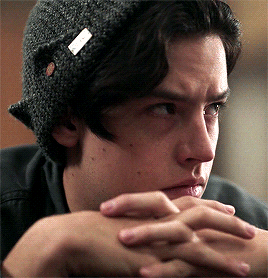
(gif source: @juggiehead)
‘Listen,’ (Y/N) started quietly, as Jughead took his seat next to her, ‘I know that for some reason – and I don’t care why- but you don’t like me.’
(Y/N) began to fan out sheets of paper, written on with detailed notes, photographs accompanied the papers and Jughead realised they were character profiles. Each piece of paper included the names, birth dates, home addresses and alibis of various students from Riverdale High on the day that Jason Bloom was murdered.
‘How did you get all of this stuff?’ Jughead asked in awe, reaching out and picking up Reggie Mantle’s profile. (Y/N) sighed.
‘I’m a nice person Jughead, I just asked and people were more than willing to tell me – it’s called being a people person.’
‘There’s being a people person and then there’s this.’
‘Yeah well, Betty told you I was useful and she was right. Anyway like I was trying to say-‘
‘Yeah, yeah. I don’t like you. We’ll get over it.’ Jughead continued to absorb himself in the papers. (Y/N) huffed, but rather than press the matter further she began to point out the places in which peoples alibis didn’t quite match up.
Soon both of the kids were absorbed in the tangling web of Jason Bloom’s death.
-
The next couple of weeks continued in the same fashion, (Y/N) would spend the week collecting intel on new students or returning back to those who didn’t quite make sense, and by the end of the week the information she had gathered was delivered to Jughead. Together they had gathered a tonne of evidence and the case for Jason Bloom was really beginning to come together.
(Y/N)’s true project however was not going to plan.
‘Betty it’s not working.’ (Y/N) sighed, sipping on her colossal strawberry milkshake.
‘Maybe he just needs more time?’ Betty tilted her head and smiled sympathetically, her pony tail bounced with the motion.
‘No he’s just getting worse. I mean at least with scathing comments came some form of acknowledgement, now it’s like I don’t even exist.’
‘I thought he was being nice to you at Blue and Gold, though?’
‘Yeah, in that room he’s all smiles and talking but then we sit here and he won’t even look at me.’ (Y/N) chewed on her straw. ‘I really don’t know what’s worse.’
‘Okay, I’ll talk to him, see what the deal is?’ Betty smiled sincerely.
‘No!’ (Y/N) shouted a little too loudly, the other patrons in the diner looked over at the girls before resuming their own activities. ‘No,’ (Y/N) repeated quietly, ‘I don’t want him to know that it bothers me- and if anyone should speak to him, it should be me.’
-
‘Can I ask you something?’ (Y/N) sat in the Blue and Gold room, her legs drawn up onto her chair and her head lightly tucked into her crossed arms.
It had been a quiet week in regards to new information being discovered, people were beginning to become curious about the motive behind (Y/N)’s questions so she had decided to place herself on the backburner for a week. Jughead was mulling over some of the older profiles, scrutinizing them for anything that could have been missed.
‘Yeah, sure.’ He mumbled as his eyes traced over the profile for Ethel Muggins.
‘What is it that makes you hate me?’ (Y/N) exhaled with a breath she didn’t know was being held.
‘You’re irritating.’ Jughead immediately replied in the same monotone voice.
(Y/N) took in a breath, ‘Yeah okay, but what is irritating about me?’
‘Everything.’ He replied again quickly.
(Y/N) began to unfold herself from the chair, she sat up straight and began to pick at loose thread on the sleeve of her blouse.
‘I thought that maybe we were getting somewhere.’
‘Yeah, well-’ Jughead turned his head to look at (Y/N), his next words caught on his tongue as he took in her sullen expression. Immediately his eyes returned to the Muggins profile and a silence descended on the room.
‘You make me feel like I’m not good enough, Jug.’
The boy didn’t respond, his eyes remained fixed on the paper in his hands.
‘Like I’m not good enough to sit at the booth,’ (Y/N)’s voice was quiet, ‘or to be friends with the guys – friends with you. I planned all of this – so you could get to know me but it just made things worse and I just wish you could give me a reason.’
Jughead made no move to acknowledge (Y/N), the silence was punctuated by the slight creak of (Y/N)’s chair as she shifted. A light puff of air left through her nose and she stood to leave.
‘That’s probably all I can get for you now,’ her eyes nodded to the paper work on the table despite the fact that Jughead was not looking at her, ‘people are finally getting suspicious of me asking so many questions.’
(Y/N) reached for the door, before she left she took one final glance at the beanie-clad boy still sat with his back to her.
‘Good luck.’
The door clicked shut.
@lostinpercyseyes @every-day-is-wednesday @mysticmurder @assonanceambiance @murderyoursoul @fuck-i-dont-care-anymore’t-care-anymore @satanwithstardust @itsjaynebird @phanofmydreams @pendletonthethird @doktorswho @frickflop @kingpendleton @an-enigmatic-avenger @captainjacksparkles @casismyguardianangel @lost-in-wonderland-x @the-winter-imagines @multiversegalaxygirl @lumiele @ineedtoorganizemybookshelf @florenceivy @yazminmcd
#Jughead Imagine#Jughead X Reader#Jughead Prompt#Jughead Fic#Fic#Jughead Jones#Betty Cooper#Riverdale Fic
404 notes
·
View notes
Text
12 Letters That Didn't Make the Alphabet
You know the alphabet. It’s one of the first things you’re taught in school. But did you know that they’re not teaching you all of the alphabet? There are quite a few letters we tossed aside as our language grew, and you probably never even knew they existed.
1. Thorn
Have you ever seen a place that calls itself “ye olde whatever”? As it happens, that’s not a “y”, or, at least, it wasn’t supposed to be. Originally, it was an entirely different letter called thorn, which derived from the Old English runic alphabet, Futhark.
Thorn, which was pronounced exactly like the "th" in its name, is actually still around today in Icelandic. We replaced it with “th” over time—thorn fell out of use because Gothic-style scripting made the letters y and thorn look practically identical. And, since French printing presses didn’t have thorn anyway, it just became common to replace it with a y. Hence naming things like, “Ye Olde Magazine of Interesting Facts” (just as an example, of course).
2. Wynn
Another holdover from the Futhark runic alphabet, wynn was adapted to the Latin alphabet because it didn’t have a letter that quite fit the “w” sound that was common in English. You could stick two u’s (technically v’s, since Latin didn’t have u either) together, like in equus, but that wasn’t exactly right.
Over time, though, the idea of sticking two u’s together actually became quite popular, enough so that they literally became stuck together and became the letter W (which, you’ll notice, is actually two V’s).
3. Yogh
Yogh stood for a sort of throaty noise that was common in Middle English words that sounded like the "ch" in "Bach" or Scottish "loch."
French scholars weren’t fans of our weird non-Latin letters and started replacing all instances of yogh with “gh” in their texts. When the throaty sound turned into "f" in Modern English, the "gh"s were left behind."
4. Ash
You’re probably familiar with this guy from old-fashioned Greek or Roman style text, especially the kind found in churches. It’s even still used stylistically in words today, like æther and æon.
What you may not know, however, is that at one time the ae grapheme (as it’s now known) was an honorary English letter back in the days of Old English. It still had the same pronunciation and everything, it was just considered to be part of the alphabet and called “æsc” or “ash” after the ash Futhark rune, for which it was used as a substitute when transcribing into Latin letters.
5. Eth
Eth is kind of like the little brother to thorn. Originating from Irish, it was meant to represent a slightly different pronunciation of the “th” sound, more like that in “thought” or “thing” as opposed to the one found in “this” or “them.” (The first is the voiceless dental fricative, the second is the voiced dental fricative).
Note that, depending on your regional accent, there may not be much of a difference (or any at all) in the two pronunciations anyway, but that’s Modern English. Back in the old days, the difference was much more distinct. As such, you’d often see texts with both eth and thorn depending on the required pronunciation. Before too long, however, people just began using thorn for both (and later “th”) and so eth slowly became unnecessary.
6. Ampersand
Today we just use it for stylistic purposes (and when we’ve run out of space in a text message or tweet), but the ampersand has had a long and storied history in English, and was actually frequently included as a 27th letter of the alphabet as recently as the 19th century.
In fact, it’s because of its placement in the alphabet that it gets its name. Originally, the character was simply called “and” or sometimes “et” (from the Latin word for and, which the ampersand is usually stylistically meant to resemble). However, when teaching children the alphabet, the & was often placed at the end, after Z, and recited as “and per se and,” meaning “and in and of itself” or “and standing on its own.”
So you’d have “w, x, y, z, and, per se, and.” Over time, the last bit morphed into “ampersand,” and it stuck even after we quit teaching it as part of the alphabet.
7. Insular G
This letter (referred to as “insular G” or “Irish G” because it didn’t have a fancy, official name) is sort of the grandfather of the Middle English version of yogh. Originally an Irish letter, it was used for the previously mentioned zhyah/jhah pronunciation that was later taken up by yogh, though for a time both were used.
It also stood alongside the modern G (or Carolingian G) for many centuries, as they represented separate sounds. The Carolingian G was used for hard G sounds, like growth or good, yogh was used for “ogh” sounds, like cough or tough, and insular g was used for words like measure or vision.
As Old English transformed into Middle English, insular G was combined with yogh and, as mentioned earlier, was slowly replaced with the now-standard “gh” by scribes, at which point insular G/yogh were no longer needed and the Carolingian G stood alone (though the insular G is still used in modern Irish).
8. “That”
Much like the way we have a symbol/letter for “and,” we also once had a similar situation with “that,” which was a letter thorn with a stroke at the top. It was originally just a shorthand, an amalgamation of thorn and T (so more like “tht”), but it eventually caught on and got somewhat popular in its own right (even outliving thorn itself), especially with religious institutions. There’s an excellent chance you can find this symbol somewhere around any given church to this day.
9. Ethel
Similar to Æ/ash/æsc above, the digraph for OE was once considered to be a letter as well, called ethel. It wasn’t named after someone’s dear, sweet grandmother, but the Furthark rune Odal, as œ was its equivalent in transcribing.
It was traditionally used in Latin loan words with a long e sound, such as subpœna or fœtus. Even federal was once spelled with an ethel. (Fœderal.) These days, we’ve just replaced it with a simple e.
10. Tironian “Ond”
Long before there were stenographers, a Roman by the name of Marcus Tullius Tiro (who was basically Roman writer Cicero’s P.A.) invented a shorthand system called Tironian notes. It was a fairly simple system that was easily expanded, so it remained in use by scribes for centuries after Tiro’s death.
One of the most useful symbols (and an ancestor to the ampersand) was the “et” symbol above—a simple way of tossing in an “and.” (And yes, it was sometimes drawn in a way that’s now a popular stylistic way of drawing the number 7.) When used by English scribes, it became known as “ond,” and they did something very clever with it. If they wanted to say “bond,” they’d write a B and directly follow it with a Tironian ond. For a modern equivalent, it’d be like if you wanted to say your oatmeal didn’t have much flavor and you wrote that it was “bl&.”
The trend grew popular beyond scribes practicing shorthand and it became common to see it on official documents and signage, but since it realistically had a pretty limited usage and could occasionally be confusing, it eventually faded away.
11. Long S
You may have seen this in old books or other documents, like the title page from Paradise Lost above. Sometimes the letter s will be replaced by a character that looks a bit like an f. This is what’s known as a “long s,” which was an early form of a lowercase s. And yet the modern lowercase s (then referred to as the “short s”) was still used according to a complicated set of rules (but most usually seen at the end of a word), which led to many words (especially plurals) using both. For example, ?uper?titous is how the word superstitious would have been printed.
It was purely a stylistic lettering, and didn’t change the pronunciation at all. It was also kind of silly and weird, since no other letters behaved that way, so around the beginning of the 19th century, the practice was largely abandoned and the modern lowercase s became king.
12. Eng
For this particular letter, we can actually point to its exact origin. It was invented by a scribe named Alexander Gill the Elder in the year 1619 and meant to represent a velar nasal, which is found at the end of words like king, ring, thing, etc.
Gill intended for the letter to take the place of ng entirely (thus bringing would become bri?i?), and while it did get used by some scribes and printers, it never really took off—the Carolingian G was pretty well-established at that time and the language was beginning to morph into Modern English, which streamlined the alphabet instead of adding more to it. Eng did manage live on in the International Phonetic Alphabet, however.
from | Mental Floss http://ift.tt/1awpkQM
via IFTTT
1 note
·
View note
Text
365 Movies in 365 Days - #1: The Founder
First up:

I saw this movie on a whim. I took a day off from work, had a gift card to Regal Cinemas and I was going to watch Fences but there wasn’t a good start time for me to see Fences. I was at the theatre, free money in hand and deceided to take a chance on The Founder. I vaguely remembered the trailer and I like Michael Keaton, so I thought why not. I’m glad I saw it, it was good.
First off, the cast. Our POV character and lead, Michael Keaton as Ray Kroc:

Michael Keaton did an amazing job as Ray Kroc. We are introduce to Ray as a down on his luck salesman, selling multi milkshake mixers to drive in diners.
Next up, we’ve got Nick Offerman as Dick McDonald:
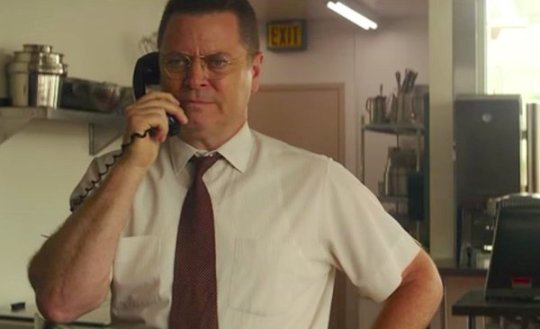
And John Carroll Lynch as Mac McDonald:

Nick Offerman and John Carroll Lynch did an incredible job as the McDonald brothers. Nick channeling some of his Ron Swanson character here but for dramatic effect and John is one of those constant character actors. You always see him in the background of movies or in small supporting roles, so it’s nice to see him here front and center as the McDonald brother with a heart of gold.
We even get Laura Dern as Ray Kroc’s wife, Ethel Kroc:

Now, I’ll be honest here, I’ll get into this in the break down of the story but poor Laura Dern in this movie. She is a great actress but she’s not given a whole lot to do in this other than to be a side plot that turns out to be weak.
Then we have the always wonderful Patrick Wilson as Rollie Smith:

And Linda Cardelini as his wife, Joan Smith:

They both are good actors and I always love seeing Linda popping up in movies or TV shows (I have loved watching her since she starred in Freaks and Geeks) but their part of the story, like Laura Derns, just feels forced into the movie.
Speaking of forced moments in this movie, B.J. Novak as Harry J. Sonneborn:
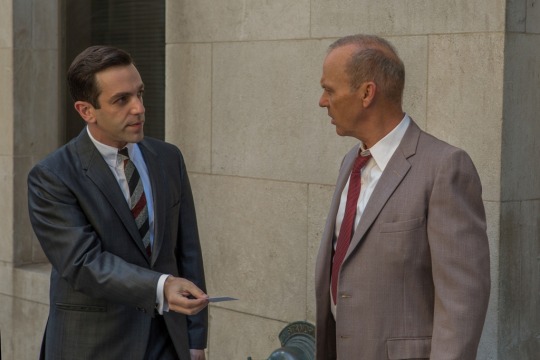
I don’t know about him. I don’t think he’s that great of an actor. I liked him okay in The Office but I thought he was very one note and after the inintial joke about his character had worn off he stuck out like a sore thumb among the cast. And since then seeing him in other shows or movies it feels like he is still playing Ryan the temp. In The Founder, he is just monotone and forgetable. Actually, when his character showed up in the film, it took me out of the story. And I felt like, great now I have to watch B.J. Novak act:

The film was directed by John Lee Hancock:

He has had some recent success as a director with Saving Mr. Banks and The Blind Side. The direction in the movie is pretty good, some nice visuals and good performances he brought out of the actors. All the issues I have with the film come from the writing. Speaking of which . . .
The movie is written by Robert D. Siegel:

He only has a few writing credits to his name, The Wrestler, The Onion Movie, Turbo and Big Fan. Where this movie falls down is the writing and story structure.
So, at this point if you haven’t seen the film or don’t want it spoiled for you, stop reading now!

The story centers on Michael Keaton’s character, Ray Kroc, a traveling salesman who keeps looking for the new gadget that will make him rich. He meets the McDonald brothers and it changes his whole life and theirs. Ray convinces the brothers to let him franchinze McDonalds in other states and that he would help manage them. After a very rigid contract is signed by everyone, Ray works to open McDonalds all over. The rest of the movie follows how the McDonald empire began and how Ray Kroc stole it out from underneath the McDonald brothers in just a few short years.
Now, I know what you might be thinking, this sounds boring, and as I am typing it, I get that but it’s not. This story is brought to life through the actors and direction, how they get you to feel for Ray at the start.
From the start, we are in Ray’s POV, so we as an audience are forced to create this connection with him. And it works, you feel bad for him, he can’t sell anything, he keeps trying and is willing to work hard. Ray’s character reminds me of Willy Loman from Death of a Salesman, hard working salesman, not incredibily good at selling but tells everyone that they are the best. And wants that American Dream so desperately, they will do anything for it.
Ray keeps hitting roadblocks with opening up new McDonalds because of the McDonald brothers rigid standards and you start rooting for Ray to bend the rules as much as he can because his heart is in the right place. But that’s when the story shifts and unfortunately, the writing doesn’t live up to the shift it wants to do.
The catalyst for the change in Ray is supposed to happen when he mets Joan Smith, played by Linda Cardelini. As Ray is opening McDonalds all over Minnesota, he meets Rollie Smith (played by Patrick Wilson) who owns a very nice steak restaurant. He is looking to get into opening a McDonalds for himself and have his wife Joan help run it. From the first time Ray sees Joan, he’s head over heels in love with her. Fast forward, Joan & Rollie open their own McDonalds, Joan and Ray end up talking a lot because of this and during one of their conversations Ray talks about how he feels that the brothers aren’t taking him seriously and any of his ideas are automatically bad. Joan tells him that she likes men who are certain of themselves and take action. And then WHAM! CHARACTER CHANGE!!!

Ray becomes much more of a hard ass. He flat out tells his wife he wants a divorce, tells the McDonald brothers he is going to do what he wants and screw them, does all this press about how McDonalds was his restaurant chain, a whole subplot with boring B.J. Novak happens about how he is able to pull this off (has to do with Ray keeping control of the land the McDonalds are on and renting the land to the owners of the building as opposed to selling the land and building to the owners) and it’s really important to the story but I just wish it wasn’t him.
And then at the end of the story, Ray has completely destroyed the McDonald brothers to the point where the only thing they have left is the original restaurant they had in California but they couldn’t call it McDonalds. And we are back fully in Ray’s POV as he is living in this giant mansion, married now to Joan, getting ready to go to a fancy dinner with Gov. Reagan and he is practicing his speech and he has not an ounce of remorse in him for all the lives he has destroyed along the way.
I actually really like the ending and how it doesn’t necessarily have a happy ending. I have a problem with the mechanism that is used to get Ray to the end of the story. The stuff with Joan feels shoehorned into the story, how their relationship didn’t get the development it needed to push Ray the way it is supposed to. If the director would have taken out some of the stuff about all the different McDonald’s opening or cut Ray going to his rich friends first to get them to buy McDonald franchises and seeing them mess them up and gave that time to developing Joan and Ray’s relationship, her being the catalyst for change might of worked better. It just felt at times that the script wanted to add EVERYTHING in instead of pairing down and focusing. It felt like the script needed another round of editing.
Overall, some really good performances (all solid performances from the main cast), liked the beginning and the ending, just not the way we got there. On a scale of 1 to 5 stars, I would give it 3.5.
#The Founder#michael keaton#nick offerman#john carroll lynch#laura dern#patrick wilson#linda cardellini#b.j. novak#john lee hancock#Robert Siegel
0 notes
Text
Lucy the Fight Manager
S5;E20 ~ February 20, 1967
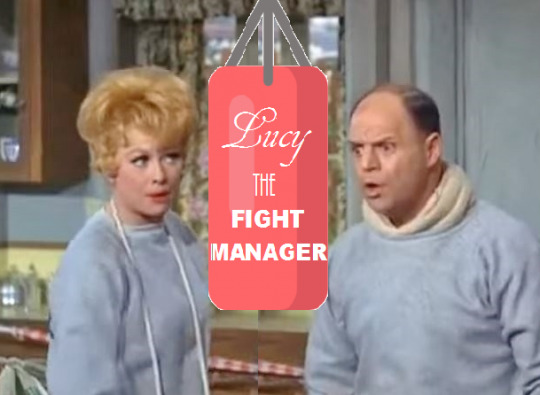
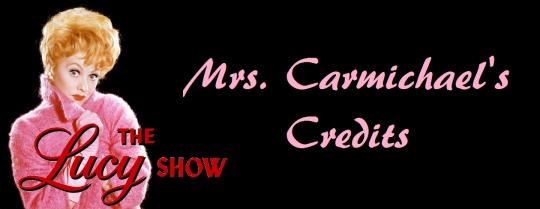
Synopsis
When Mr. Mooney has an argument with his wife, he orders flowers that are delivered by ex-prize fighter Eddie Rickles (Don Rickles). Eddie wants to buy a flower shop that will cost $3,000. When Mr. Mooney won't loan it to him, Lucy is determined to get him back in the ring to earn it.
Regular Cast
Lucille Ball (Lucy Carmichael), Gale Gordon (Theodore J. Mooney)
Roy Roberts (Mr. Cheever) and Mary Jane Croft (Mary Jane Lewis) do not appear in this episode, although Lucy does have a phone conversation with Mary Jane.
Guest Cast

Don Rickles (Eddie Rickles) worked as a stand-up comic in nightclubs for nearly 20 years before making his film debut in 1958. Rickles was known as an insult comic and became a staple of Hollywood roasts. This is his first and last acting appearance with Lucille Ball, but would be seen with her on variety shows and specials through 1988. Rickles was the voice of Mr. Potato Head in the animated Toy Story franchise. e died in April 2017 at age 90.
Eddie is a former boxer now working as a delivery boy for Finley's Florist, which he wants to buy from Mr. Finley.
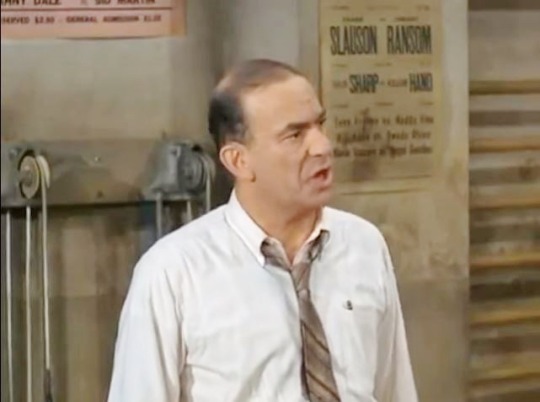
Cliff Norton (Ike, Sonny Shaw's Manager) makes the second of his two appearances on “The Lucy Show,” returning for three episodes of “Here’s Lucy.” He did a 1972 episode of “The Don Rickles Show.”
The character is never referred to by name in the dialogue.
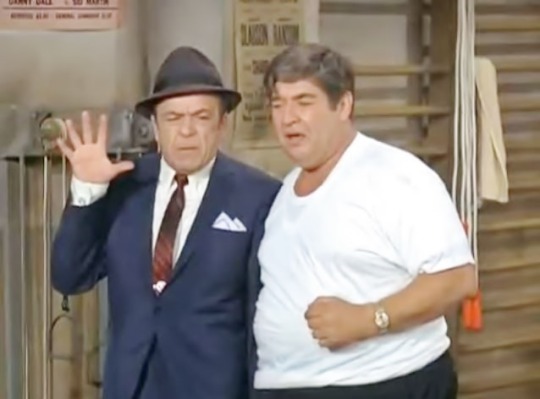
Lewis Charles (Nick, above left) was seen in eleven Broadway plays between 1939 and 1947. In Hollywood, he is credited with over 160 films and TV shows. This is his only appearance with Lucille Ball.
The character is obviously supposed to be a mobster. He bets on Sonny Shaw and tells his trainer that he'd better win.
Stanley Adams (Louie, Sonny Shaw's Trainer, above right) makes the first of his three appearances on “The Lucy Show.” He was also seen with Lucille Ball in Critic's Choice (1963). In 1960, he was seen with Don Rickles in the film The Rat Race.
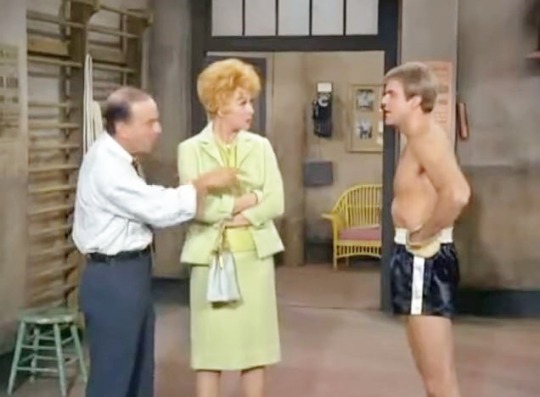
Bruce Mars (Sonny Shaw, a Young Prize Fighter) makes his only appearance on the series but returns the following year for an episode of “Here's Lucy.”
Mars has no dialogue, but he looks good in his boxing trunks! He shows more skin than has been seen before on “The Lucy Show.”

Sonny's ‘Tomato’ and others at the gym go uncredited.
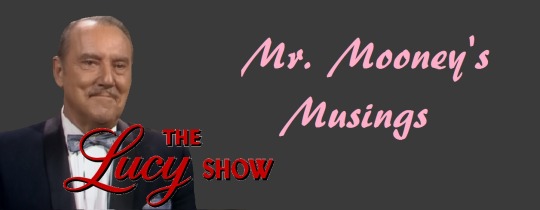
This is the only episode written by Ronald Axe and Les Roberts. The pair also wrote an episode of “The Andy Griffith Show” (filmed at Desilu) that aired earlier in February 1967. “The Lucy Show” was the lead-in to “The Andy Griffith Show” on CBS's Monday night primetime schedule.

This is one of more than 30 episodes of “The Lucy Show” that is in the public domain and not under copyright. Because of this, it appears on many low-quality, low-priced videos.
While most actors got to use their own first names on the series (Lucy, Mary Jane, Mel Torme, Joan Blondell) Don Rickles is called Eddie, but uses his real surname. This is a rare example of Rickles doing scripted comedy NOT based on his brand of insult humor.
Stand-up comic Don Rickles made quite a name for himself as a sitcom guest star at this time. Lucille Ball reportedly had a hard time working with him because she never knew when he was kidding and when he wasn't.

The episode opens with Mr. Mooney on the telephone with his wife Irma. The character is often mentioned on the series, but never seen. Later in the episode, we learn that Irma is in charge of the Flower Show and wants to hire Eddie. The name ‘Irma’ was doubtless chosen for its association with the film, radio and television series “My Friend Irma” which starred Gale Gordon’s mother, Gloria Gordon, who died in 1962, the same year “The Lucy Show” began.

Lucy says she likes flowers because she used to live over a funeral parlor, although where and when we never find out!
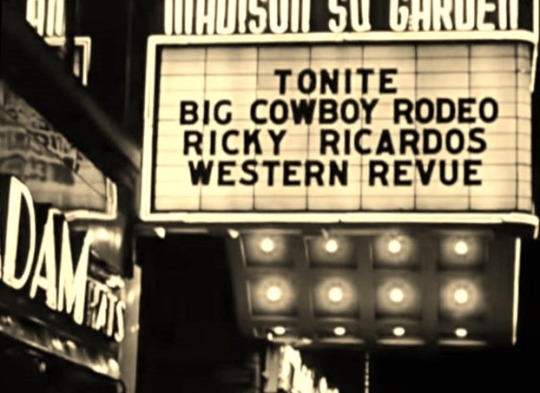
Mr. Mooney says he saw Eddie Rickles knock out Joey Mitchell at Madison Square Garden in 1962. Although there was a real professional boxer named Joey Mitchell, his career began and ended in 1923 and ever got anywhere near Madison Square Garden! But Lucy Ricardo did, when she performed in “Lucy Goes to a Rodeo” (ILL S5;E8) in 1955.
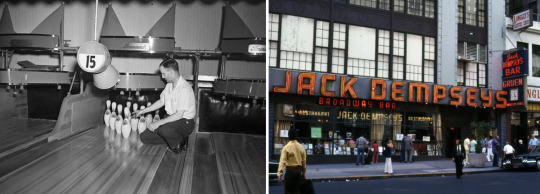
Mr. Mooney says former baseball players generally open bowling alleys and boxers open saloons. Eddie wants to open a flower shop. Mr. Mooney may have been thinking of Jackie Tavener (1897-1969), who was a professional baseball player from 1921 to 1934 and later was the proprietor of a bowling alley in Fort Worth known as Tavener's Playdium. In 1935, former heavyweight boxing champion Jack Dempsey opened Jack Dempsey’s Bar in midtown Manhattan. It closed in 1975, but was seen in many movies and television shows.
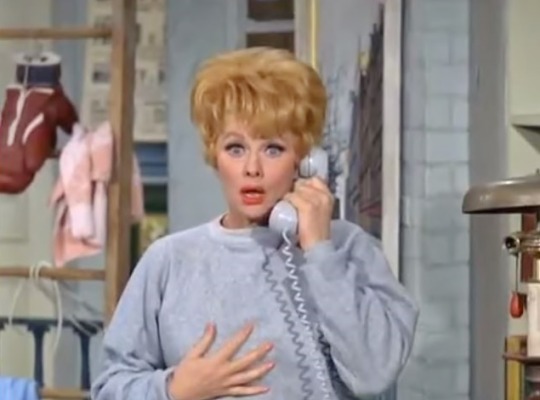
Lucy mistakenly thinks Sandy Koufax is a boxer. Sanford Koufax is a former American Major League Baseball player who pitched 12 seasons for the Brooklyn / Los Angeles Dodgers from 1955 to 1966. Koufax was first mentioned on the series in “Lucy and Viv Play Softball” (S2;E3).

More than once, the episode mentions ‘the Manassa Mauler’ Jack Dempsy. William Harrison Dempsey (1895–1983) was a professional boxer who competed from 1914 to 1927, and reigned as the world heavyweight champion from 1919 to 1926. He was mentioned on “I Love Lucy” several times, mostly by Fred Mertz, who was a boxing fan and former Golden Gloves champion.
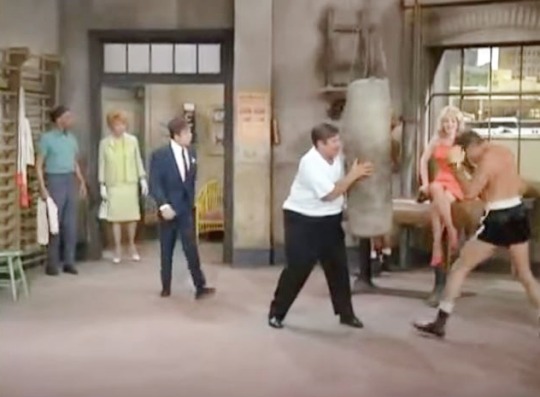
When asked if Eddie Rickles is training at Lefty Lattimer’s Gym, Lucy replies that he training at Killer Carmichael’s! She decorates her apartment with boxing posters, sets up a make-shift ring in the kitchen, fills her laundry bag up for sparring practice, replaces her lampshade with a bell, hangs a volleyball as a punching bag, and puts a mattress on the floor for calisthenics. She lies to Mr. Mooney about being sick, saying she has the mumps!
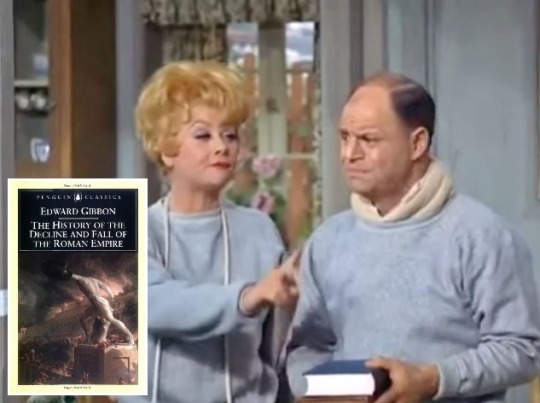
When putting Eddie on the bathroom scales she makes him hold two big books: “The Decline and Fall of the Roman Empire” and “Aunt Fanny's Cookbook” because the scales are off and that is the only way to get an accurate reading. The History of the Decline and Fall of the Roman Empire was written by English historian Edward Gibbon, which traces the trajectory of Western civilization from the height of the Roman Empire to the fall of Byzantium. It was published in six volumes from 1776 to 1889. Hardly reading one associates with Lucy Carmichael. Aunt Fannie's Cookbook, on the other hand...

Ball and Rickles get a round of applause from the studio audience when they jump rope in tandem.

At the end, Lucy knocks Eddie out with one punch and he realizes he has a glass jaw. This is a boxing expression for one who can easily be knocked out by punches to the jaw, a major drawback for a prize fighter.
Callbacks!

Lucy played a fight manager named Kitty Williams in a November 1958 episode of the “Westinghouse Desilu Playhouse” titled “K.O. Kitty” starring Matt Lundigan and Aldo Ray as the prize fighter. The anthology series (hosted by Desi Arnaz) also presented episodes of “The Lucy-Desi Comedy Hour.” Lucille Ball was supposed to play several more non-Lucy Ricardo roles on the series, but this was the only one that ever materialized. It was produced by Quinn Martin, who also came up with the story. It was written by Martin's wife, Madelyn Pugh, and Bob Carroll Jr., the “I Love Lucy” writers who also worked on the first few seasons of “The Lucy Show.”

Lucy Ricardo and Ethel Mertz ended up at the fights in the last scene of 1951's “The Girls Want to Go to a Nightclub” (ILL S1;E1), the very first “I Love Lucy” episode ever aired.

Everyone but Lucy and Ethel seem to be watching the fights on television in “Ricky and Fred are TV Fans” (ILL S2;E30).
FAST FORWARD
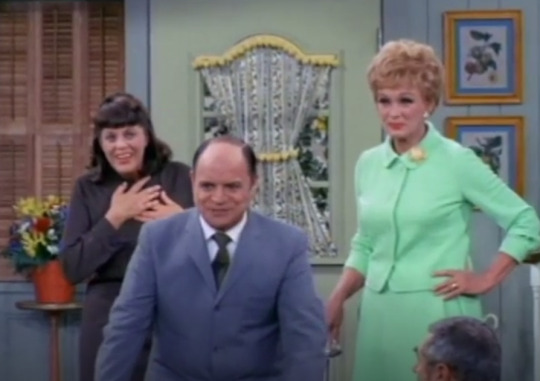
Two years after this “Lucy Show” episode, Don Rickles played himself on the Desi Arnaz sitcom “The Mothers-in-Law” (S2;E24) produced and directed by Elliott Lewis, husband of Mary Jane Croft and was written by original “Lucy” writers Bob Carroll Jr. and Madelyn Davis.

Rickles was mentioned on “Lucy and Sammy Davis Jr.” (HL S3;E3) in 1970, jokingly saying her grouchy neighbor writes fan letters to Don Rickles.

Rickles is mentioned again in 1974′s “Milton Berle Is The Life of the Party” (HL S6;E19) when Berle calls him “the merchant of venom” on a telethon!
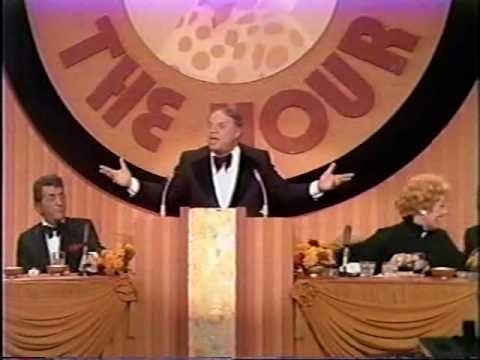
In February 1975, Rickles was on the dais to roast Lucille Ball on “The Dean Martin Celebrity Roast.” “Lucy Show” cast mates Vivian Vance, Gale Gordon, Dick Martin, Dan Rowan, Bob Hope, Milton Berle, Gary Morton, and Jack Benny (in his final TV appearance) were also on hand.
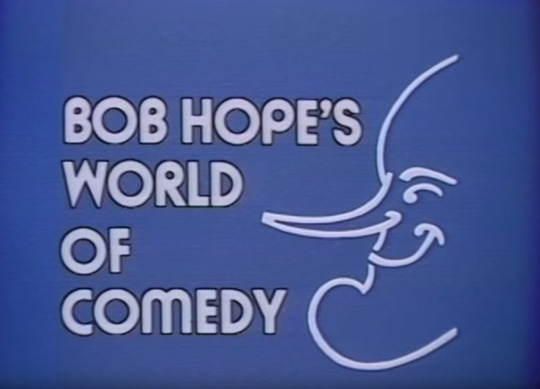
In 1976, both Rickles and Ball were part of “Bob Hope’s World of Comedy” although the two did not share any screen time.
Blooper Alerts!
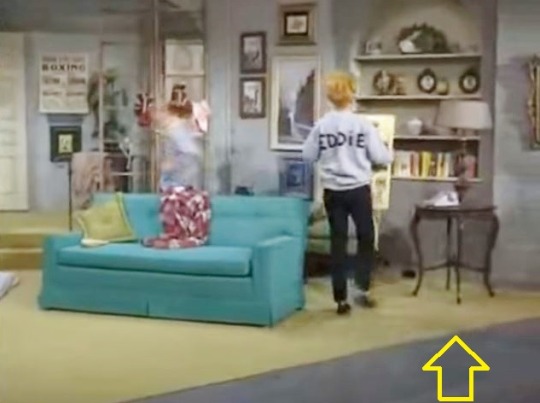
Where the Floor Ends! When the camera pulls back for a long shot of Lucy's living room, the point where Lucy's wall-to-wall carpeting meets the cement floor of the soundstage can be seen.

Super Hearing? Lucy hears the timer buzzer on the washing machine and says her laundry is done. In “Lucy and Joan” (S4;E4) it was established that Lucy's apartment complex has a laundry room.

Shoeless Joe! After throwing an air punch at Eddie and twirling to the ground, Lucy’s left shoe goes flying off her foot into the living room! A few moments later, Lucy steps out of her other shoe to finish the scene.

“Lucy the Fight Manager” rates 3 Paper Hearts out of 5
#The Lucy Show#Lucy the Fight Manager#Lucille Ball#Don Rickles#Gale Gordon#Cliff Norton#Lewis Charles#Stanley Adams#Bruce Mars#Ronald Axe#Les Roberts#K.O. Kitty#Prize Fighting#Boxing#Sandy Koufax#Jack Dempsey#The Decline and Fall of the Roman Empire
3 notes
·
View notes
Text
For those who grew up as horror fans in the 1980s, invasions of killer monsters intent on devouring nubile young flesh were a popular stock in trade. With an entire generation of young filmmakers raised on the Cold War thematics and situations of alien invasion films of the ’50s and ’60s on TV, balanced with a steady intake of harder-edged violence and gore from late-’60s and early ’70s genre revolutionaries, the combination of creepy, icky things from out of this world and Tom Savini-style grue was a natural progression. Aliens weren’t just out to take over our planet or shoot you with ray guns—they wanted to eat you too, and in as messy a way as the budget would allow.
Storyline
Two campers are nearby when a meteor falls to Earth. When they investigate, they are attacked and eaten by a bizarre life form that emerges from the crashed rock.
A house near the crash site is the home of Sam (James Brewster) and Barb (Elissa Neil), and their two children, college student and budding scientist Pete (Tom DeFranco) and his younger brother Charles (Charles George Hildebrandt), a monster movie fan. Visiting are Aunt Millie (Ethel Michelson) and Uncle Herb (John Schmerling). When a rainstorm sets in, Sam goes downstairs to check the basement for flooding and is eaten by the bizarre monstrosity. Barb suffers the same fate when she goes looking for him.
This slideshow requires JavaScript.
Pete sets up a study date with classmates Ellen (Jean Tafler), Frankie (Richard Lee Porter), and Kathy (Karen Tighe). Uncle Herb, a psychologist, wants to investigate Charles’s interest in the macabre, and he holds a brief interview with the boy before he falls asleep in the living room. Aunt Millie heads over to her mother Bunny’s (Judith Mayes) house for a luncheon with her retired friends. When an electrician arrives to investigate a circuit breaker malfunction in the basement, Charles dons a costume and goes down to scare him. There, he discovers the basement is infested with slug-like creatures feasting on the electrician’s and his mother’s remains, guarded by their huge mother, the monster from the meteor crash. After realizing that the eyeless creatures react to sound, he stands silently, escaping his parents’ fate.
Meanwhile, Ellen and Frankie have discovered one of the tadpole creatures dead on the way over to the house, and deem it unlike any animal on Earth when they dissect it. Science fiction fan Frankie hypothesizes that the creature could be from outer space, but hard-nosed scientist Pete dismisses that theory. At Bunny’s house, Millie arrives and they prepare the luncheon, unaware that the spawn have infested the house. When her guests arrive, the spawn creatures emerge and attack them. The women fight back and manage to escape in Millie’s car.
This slideshow requires JavaScript.
Back at the house, Pete, Ellen and Frankie seek out Uncle Herb to get his opinion on the creatures, only to find him being devoured by the spawn. As the adult creature emerges and charges them, they run upstairs to barricade themselves in Charles’s bedroom. Charles distracts the adult by turning on a radio, which it eats, causing an electrical fire which burns it. Pete and the others then see Kathy arriving and pull her into the bedroom just in time to save her from the beast. The teens decide to head for Pete’s bedroom, where there is a phone to call for help with, but as they emerge, the adult creature pounces on them. Pete flees to another room and from there onto the roof; Frankie and Kathy run up to the attic, while Ellen stays in Charles’ room. The creature easily breaks down the door, bites Ellen’s head off and devours her body. Peter returns through the attic window; but traumatized after seeing Ellen’s body, he becomes unhinged, fighting with Frankie to open the attic door, which attracts the creature.
Meanwhile, Charles has concocted a plan: he has filled a prop head with explosive flash powder, with a frayed electrical cord trailing behind to act as a fuse. He arrives in the attic before the creature can attack Peter and the others, spurring the creature into devouring the prop head. However, the cord proves too short to plug into an outlet. One of the spawn creatures appears and attacks Charles, but gets in the way of the adult when it lunges at Charles and ends up being eaten. Now that the monster is distracted and its mouth close enough, Charles manages to get to the outlet, igniting the powder and blowing up the adult.
With the threat revealed, a massive hunt is mobilized. Policemen and townspeople go around killing the alien spawn and burning the remains. Millie returns to the house to care for Pete and Charles as best she can, while Frankie and Kathy are taken away in an ambulance. That night, a lone patrolman stands guard outside the house. His contact on the CB radio is confident that the spawn has been wiped out, but then the patrolman hears a low rumbling, and sees the hill by the house lift up, revealing a fully-grown spawn of colossal size.
Back Story
In terms of this combination, 1983’s The Deadly Spawn was a pioneer. Filmed on a shoestring budget around $25,000, the film tells the story of a houseful of people under assault from alien creatures breeding in the basement, which are basically mobile, worm like stalks terminating in giant mouths full of rows of razor-sharp teeth.
John Dods, who co-wrote the film’s original story and served as director of special effects, recalls the origin of the Deadly Spawn. “Ted Bohus, our producer, called me up one day,” says Dods, “and said, ‘Hey, let’s make ourselves a monster movie.’ The only problem we had at that point was, we didn’t have any money. But our friend Don Dohler in Baltimore had managed to finance and make a film called The Alien Factor, and had managed to sell it to television, and even make a profit. So Ted figured, and I agreed, why couldn’t we do the same thing?”
Neither Bohus nor Dods were entirely without experience at the project’s outset; in fact, Dods is quite well-known (famous, almost) among semi-pro filmmakers as the producer-director-writer-animator-designer of a series of short films featuring Grog, a delightfully primitive critter who was briefly featured in the TV special The Making of The Empire Strikes Back as an example of the stop-motion animator’s art. Bohus, a genuine SF fan and former fanzine publisher, may not have had much producing experience, but he did achieve the goal of procuring financing for the project, and he assembled a crew that included some of the best young film making talent in the East: Dods; makeup artist Arnold Gargiulo musician Ken Walker to score the film, along with Paul Cornell and Michael Perilstein; and renowned fantasy artist Tim Hildebrandt, who served as executive producer and made several special contributions to the film’s effects and designs.
The Deadly Spawn design by John Dods
While the acting and the directing of The Deadly Spawn is only passable at best the work of these four gentlemen make the film watchable-and even highly enjoyable, for those of us who like the idea of face-eating mutant creatures from out of space. For, in the time-honored tradition of low-budget monster cinema, the play is not the thing; the “Thing’ is the play. It is Dods’ hell-raising title creatures, and the havoc they raise in a New Jersey suburb, that gives this film its singular charm.
Dod’s first order of business was his collaboration with Bohus on a story, which served as a key tool in obtaining investors; this story was later fleshed out into a somewhat flabby screenplay by director Doug McKeown. Dod’s second task-and one that turned out quite a bit better–was the design and construction of the film’s highly unpleasant stars. “We wanted something really frightening,” says Dods, “and since this was over two years ago, we were probably a little influenced by Alien. I decided to give it a lot of teeth, because, to me, that says that it’s going to bite you. So taking that to an extreme, we gave it a whole lot of teeth-three heads full of them. We did a number of toothy sketches, discussed them with the director and so forth; I did one more version, which I later sculpted in clay, and that seemed to strike everyone as pretty awful in the right way.” The adult creature was built, along with various other required bits and pieces, over a two month period, by Dods with technician Greg Ramoundas.
Interview with Ted Bohus
Ted, how and when did The Deadly Spawn get started?
BOHUS: In October of 1980 extrapolated an idea from a news story I’d read. I imagined a dormant microbe or spore inside a meteor, which crashes in an isolated area (it had to be an isolated area, because the budget would not let us put it down in New York City!), comes alive and starts eating everything in sight. Eventually it ends up in a family’s basement and starts producing, or should I say, reproducing various sized offspring. The “tooth-heads” eventually invade the house, and the surrounding area.
How are the spawn finally destroyed?
BOHUS: Wait a minute now…I can’t tell you that! But I will say that the young boy in the film (played by Tim Hildebrandt’s son), finds a way to destroy some of them.
Deadly Spawn is an independent production. How did you find backers to finance the film?
BOHUS: A friend of mine is studying to become a doctor. He and a few other friends put up the initial starting money. Since then Tim and Rita Hildebrandt and another friend have become involved.
How did you meet the Hildebrandts?
BOHUS: I met Tim and Greg Hildebrandt at a convention about four years ago. We started talking about painting, science fiction films, Disney and how we are all still 15 years old. Actually, after the first meeting, I only stayed in contact with Tim and Rita. Periodically we all got together to watch films or talk. When I mentioned the film to Tim and that we were scouting locations he said, “Hey I’ve got an idea! Why don’t you use our house?” So we did. And we used his son too! And Rita, and the neighbors.
How did Charles Hildebrandt get the part of the young boy?
BOHUS: Well he didn’t get the part just because he was Tim’s son. Charles is a natural actor. No fear in front of the camera whatsoever.
Back to the Hildebrandts. Is Greg also involved in this film project? I thought the Hildebrandt Brothers always did everything together.
BOHUS: No. Tim and Rita are the only Hildebrandts involved in this project. Tim and Greg have split up and gone their separate ways. I think that the Clash of the Titans poster was their last work together.
What about the new Atlantis calendar?
BOHUS: That was also done before the split.
Artistic differences?
BOHUS: I think Tim wants to get more heavily into filmmaking at this point.
Will Tim be doing the poster for The Deadly Spawn?
BOHUS: I think so. He’s already done up a few roughs-I’d like something with a 50’s look.
You mean Big Monster and Girl in Trouble?
BOHUS: Exactly! Tim’s also working on a miniature for the film.
How did you locate the actors?
BOHUS: All the actors and actresses are professionals- put ads in the New York trade papers asking for actors willing to work for a small percentage, and described the parts.
How many responses did you get?
BOHUS: Well, I expected about 60, but got over 400! Some from as far away as Miami! | Weeded them down to about 100. Then I took the resumes to our Director, Doug McKeown, and our Effects Director John Dods. We narrowed them down to 50. Gave 40 screen tests and picked 12 people.
You mentioned Director and Effects Director. Do these people also work on a percentage?
BOHUS: Everyone on this film is working on a percentage.
How did you find them?
BOHUS: John Dods, I’ve known for many years. He’s mainly known for animating the Grog cartoons, but I brought him in to work on all parts of the film, not just the effects.
Ted Bohus’ original concept art for the main creature.
Did he design the creatures in the film?
BOHUS: We both had ideas about what the “Spawn” should look like…possibly three or more snake-like heads, plenty of teeth, slimy. I was trying to design something with a man in a suit but John said no, it would be better just to have this enormous form with heads and teeth. A big mechanical creature. He went off and a few days later brought over some designs. We went through them and rejected some. He went off again and this time hit it right on the head.
Who is directing?
BOHUS: Doug McKeown is a filmmaker that John Dods knew for many years. He recommended him for the job.
What about the crew?
BOHUS: Lighting, sound, construction, all the crew except for our Director of Photography are local guys I’ve known for years. They’ve been making films since high school.
How long have you been in production?
BOHUS: About eight months.
You kept a crew and actors together for eight months?
BOHUS: We love making movies.
What do you hope to do with the film after it’s finished? Do you have any leads at this time?
BOHUS: A few. Most companies are waiting for the entire film to be rough cut. There’s a booming market out there these days, with HBO going 24 hours, overseas sales and a lot of new countries getting into the movie market. Plus video tapes and discs.
So the film has a pretty good chance of being sold quickly.
BOHUS: If it’s a good product, it’ll sell’ fast:
Do you sell a company all rights or can you sell it yourself overseas and to HBO?
BOHUS: That depends. I can sell the film outright for one sum and they can sell it to the other markets. Or if you have a lot of contacts you can sell it yourself.
Each market can be a different deal then?
BOHUS: Yes.
After this film is sold would you like to get right into another one?
BOHUS: Yes, of course. I’d like to show the film companies what we can do with a low budget and hope they would back us on the next project. Don’t forget, we have everything right here. We create the stories, write the screenplay, do storyboards, artwork, special effects, music, the whole thing! We can turn in a finished product completely on our own.
Do you think that the major companies will like that?
BOHUS: We want to make a good product, an entertaining film, for a decent budget and make a name for ourselves. If what we’re doing is good we’ll get lots of work.
What do you think of The Deadly Spawn? Is it a good film?
BOHÚS: I think it’s a good, fast paced, entertaining film. The science fiction, horror, thriller, whatever you want to call them, films of today (with few exceptions) are too slow. If you’re going to the movies to get scared or see monsters you have to wait through twenty minutes of baloney to get to see fifteen seconds of effects.
I know what you mean, some films drag on and on and center everything around one or two effects scenes, while the rest of the
film is totally boring.
BOHUS: Exactly!
Do you have any other projects in the works?
BOHUS: Yes, I’d like to work with John and Tim on a project called Bing’s Thing. It’s a science fiction musical comedy-horror film. (Chuckle) Also, I’m getting treatments ready for four other films. One’s a U.F.O. story with a twist. One’s a science-fantasy. Another is similar to Journey to the Center of the Earth, and explains Big Foot and U.F.O.’s.
When do you expect to have The Deadly Spawn finished?
BOHUS: I hope within two to three months.
Tim Hildebrandt paints the artwork for the Deadly Spawn poster.
An Interview with Tim Hildebrandt
The Hildebrandt name is one that is usually associated with the big Hollywood megabuck spectaculars such as Star Wars and Clash of the Titans. How did you come to be involved with The Deadly Spawn which is a modestly budgeted horror/thriller?
HILDEBRANDT: Well, I’m a personal friend of the producer Ted Bohus and the special effects director John Dods. When they began work on The Deadly Spawn I was caught up in their enthusiasm for the project and wanted to have something to do with it.
What is your function on The Deadly Spawn?
TH: Well right now I’m building a “mystery set” outside in my barn in conjunction with John Dods. It’s a miniature landscape but it involves something that the producer doesn’t want revealed as yet.
How is a low budget film able to afford building even a miniature set?
TH: We’re low budget by Holly-wood standards certainly but you can still get good results without spending a lot of money. I did a 3M Company TV commercial which involved building miniatures. To give you an idea of what Hollywood people want to do this kind of work, John Dykstra wanted, I believe, somewhere in the vicinity of a couple hundred thousand dollars to pull off an effect that actually could be pulled off for $5,000-$10,000 at the most.
It’s been said that when you have a lot of money, there is a tendency to do things in the least efficient way!
TH: Exactly! If you go back to the old Hollywood days and the old serials such as Flash Gordon and Buck Rogers some of those effects men were told the night before that they had to have certain effects or sets ready. They would look around and see what they had in the way of available materials: a football helmet would become a space helmet. To make something out of nothing that to me is more fun than having a lot of paraphernalia at your disposal.
So on The Deadly Spawn you rely more on ingenuity and resourcefulness than on mega-bucks?
TH: That’s it in a nutshell.
People associate the name Hildebrandt mostly with fantasy illustration, The Lord of the Rings calendars, for example, but your involvement with film goes way back.
TH: It began in my parent’s garage when I was a teenager, 1954 or thereabouts after having seen War of the Worlds by George Pall was slightly impressed by the special effects. My brother Greg and I took eight months to build a miniature city—like the one in the film. This was when we were in high school. We’d come home at night in the middle of winter and spend hours making detailed windows and carving bricks in the plaster walls. Then we blew it up using powdered magnesium, filming it in slow motion on an old Keystone regular 8 movie camera. A couple of scenes were used by the Jam Handy organization as part of a film on the San Francisco earthquake. Jam Handy is an industrial film producer and I worked for them primarily doing cell animation. I never actually wanted to be an illustrator. My prime objective was to be an animator for Walt Disney.
You sound as though you’re well known ventures into fantasy illustration have been a diversion from your main passion.
TH: Yes, actually, I look at it that way. You asked before why I got involved in The Deadly Spawn. I just wanted to get my hands into a film; I wanted to make something to hold onto a camera light, to be part of it, somehow.
You and your wife Rita are functioning as executive producers on the film.
TH: Which, simply put, means we put money into the film.
Your son Charles has a featured role in The Deadly Spawn.
TH: Let me tell you about my son Charles . . . he kills the monster! Charles plays a 12 year old horror film buff who likes to frighten people by appearing in a puff of smoke (powdered magnesium) as a monster. At the climax of the film Charles feeds the monster a “head” full of powdered magnesium and blows it to pieces.
You allowed your house to be used as a location for some sequences in The Deadly Spawn. What is it like to have a film crew marching in and out of your house carrying equipment—and monsters up and down stairs?
TH: I enjoyed it—being around all that activity. It was a very messy film. The monster is coated with thick slime before every take and there’s lots of blood in the film. One scene involved the Uncle who is discovered in a room infested with little spawns who are chewing him to pieces. I had a white carpet in that room, but needless to say, it had a lot of red in it by the end of the shoot. The company we took it to for cleaning did a double take when they saw it.
Did anything amusing happen during the shooting?
TH: Well, I saw the director pull his hair out a few times—I thought that only happened in the movies!
I understand that you were approached to do design work on the Disney/Paramount production Dragonslayer.
TH: Years ago, yeah. But I was in the middle of trying to sell Urshuraka novel I wrote with my brother and Gerry Nichols—as a film. We came quite close, but the short side of the story is that it was just too expensive to do. Joseph E. Levine for example saw the Urshurak presentation. He applauded, turned to us, slapped the arm of his chair and said “Well, that’ll cost $145,000,000 to make!” We thought he was joking but he meant it literally.
Urshurak—like most of your previous work was a joint venture between you and your brother Greg—”The Brothers Hildebrandt.” Up until painting the Clash of the Titans poster you worked together, usually both of you contributing to each painting. There has been a split between you two and now you work alone. What happened?
TH: It was not a friendly parting of the ways. At the time it happened I was working on a very important piece of work with my brother—production design for the forth-coming motion picture The Beast of Krull to be directed by Peter Yates. I was on the job for a month. One day I was informed that I was off of the project and that Greg was to continue … let’s leave it at that.
So at this point we don’t know if any of the design work in The Beast of Krull will represent your efforts.
TH: Right, I won’t know until I see the film.
Is it true that members of The Deadly Spawn film crew have found their way into one of your current projects?
TH: Yes, I’m painting a 1983 fantasy calendar for the TSR people, who make Dungeons and Dragons and other role playing games. It’s called “Realms of Wonder.” Crew members posed for various characters; our cinematographer Frank Balsamo became a dwarf; John Dods posed for a monster and a wizard (in the same picture!); and our production coordinator Kathy Vent posed for a mermaid.
What are your other current projects?
TH: Well, I consider The Deadly Spawn to be my prime project. But I’m also doing two books with my wife. One is the “Fantasy Cookbook” to be published by Bobs Merril Company. And we’re doing an adult picture book on Merlin the Magician. I’m also discussing other projects with the TSR people—they’re very good to work for.
Would you like to be involved with film in the future?
TH: Yes, in the area of production design, in creating the look of the film. I like to build miniature sets—and I’ve always wanted to do a matte painting.
Douglas McKeown and Mother Spawn
Director/screenwriter Douglas McKeown
A bio of you says you started a theater in your house at age 9.
DOUGLAS McKEOWN: When I was in sixth grade, I did a makeup inspired by The Curse of Frankenstein. There were maybe 15 people sitting in the basement facing a table I was lying on with a sheet over me, and on cue I sat up, the sheet slipped off my face and a kid in the audience screamed, “Shit!” and fell off his stool. Well, that did it; I was hooked. I can still see the expression on his face. So I kept making plays about monsters, and shanghaied kids from the neighborhood to be in them even my mother had to step in once at the last minute and suit up as the Monster for my spin on Frankenstein Meets the Wolf Man. Guess who played the Wolf Man! That show ended with a castle cave in that caused so much smoke and dust, the audience had to flee up the steps to keep from choking to death
My other extracurricular activities included showing off severed fingers in boxes or staging bloody stabbings and murders by the side of the road for the benefit of passing motorists. I was privately doing more and more realistic makeups and sneaking out after dark to make “appearances.” I know there are grown adults out there who still have nightmares about their childhood run-ins with a growling, hairy creature running past an open window or a maniac in a cape jumping off a roof, or some shapeless thing they couldn’t quite make out scratching at the back door. When I was 17, I filmed myself as the Phantom of the Opera on 8mm, and sort of turned quasi-professional. I got a makeup scholarship in college and started designing makeups for the theater department’s productions while majoring in English and studying film,
What, spawned The Deadly Spawn?
McKEOWN: In 1980, I was directing a play at the Bouwerie Lane Theatre in New York when I got a call from John Dods, whom I had known for a long time. He said he’d met a guy at one of the horror conventions, Ted Bohus, and they were thinking of making a horror/sci-fi-type movie, and would I be interested in joining them? John and I had worked together in the 1970s; I’d enlisted him to create some effects for a house of horrors I designed at the Jersey Shore boardwalk, and before that he’d helped me create animated titling for a documentary film I made with students. We’d also worked together on successful stage productions for the high school I taught at. During our first meeting out in New Jersey, the two guys told me they were going to be co-directors of the film, but they needed someone to “direct the actors.” I said I’d never heard of a job directing only the actors, so I said no. However, I would be willing to take on the job of sole director of the film. So we agreed to that: Dods would direct the effects, Bohus would produce and I would direct.
Then, when I found out they had no script, treatment or storyline beyond “a monster comes from space and eats people.” I said I would also have to write the screenplay, or it was no deal. They also agreed to this-a little reluctantly, I thought. The three of us would collaborate on the story, but I would do the script.
Could you give us some primary inspirations behind the creature design?
McKEOWN: We talked about Alien and Jaws and used the term “eating machine” a lot-a creature that was mostly teeth. The “mother spawn,” as we started calling it—or her-gradually took shape in Dods’ basement studio in New Brunswick. The creature prop looked amazing even before it had any flesh on it. This was all Dods’ work, topped off later with a luridly detailed paint job by Tim Hildebrandt. In fact, you could say Dods was the mother spawn, he was so intensely into his creation. I even overheard him talking to it once when he thought no one was around.
The ’80s had a lot of independent, low- to middling-budget monster films, but The Deadly Spawn is pretty intensely gory for when it came out. Was that always the intent, or just a happy accident?
McKEOWN: Let’s call it happy intent. At one of our early production meetings, we discussed going for an R rating, because in the low-budget arena it would actually be a draw rather than a drawback, and we wanted to make as big a splash as possible. Nudity was suggested, but I nixed it. I think it’s always ridiculous and obvious that whenever characters are about to be carved up in a movie, they happen to strip down and get in the shower first. I thought, why not extreme violence? I actually said, “Let’s rip the mother’s face off.”
Now, I personally was not a big fan of bloody, gory movies—which is surprising, I know, given my predilections as a child. It’s just that I had come to appreciate mood, atmosphere, subtlety in movies suggested terrors more than overt ones. But this project definitely called for going as far as possible-taking the audience over the top beyond disgust, to actual laughter even. A big laugh in the theater can be as potent and as valid a release as a scream. I definitely -heard those kinds of laughs when The Deadly Spawn played in 1983. Especially in the vegetarian luncheon scene, which has been called “disturbing” and “hilarious” at the same time.
There’s an interesting contrast between the two lead brothers, in that one is a scientific rationalist and the other, much younger boy engages in imaginative escapism via horror films and nostalgia. Was this a planned-out element of the film?
McKEOWN: Planned. Charles is the brave and resourceful hero, the one who stands in for me as a kid with horror-movie obsessions. He just lives contentedly with horror all the time in his own little world. The hero idea came from one of those nights when I was 11 or 12, running through the woods done up as the Wolf Man, and had a revelation. Here I was in full makeup, hair glued on my face, fangs, the works, and I suddenly realized that I was completely unafraid of the dark, or of being alone or anything at all, really. And that was because I was the monster. I understood monsters from the inside. Of course, I knew I couldn’t invest the character of Charles with all the details from my life. I was hoping the audience would get the idea that this little imaginative world of his had actually prepared him for the challenges he was about to face.
I wanted the older brother, Pete, to be locked up in his own narrow paradigm, and his relationship with Charles-teasing his younger brother about the monsters-to find its equivalent in the more adult verbal sparring he was going to have later on with Ellen. She turns out to be open to the more imaginative possibilities of life; they inspire her scientific curiosity. Pete, on the other hand, is completely closed to the imagination, science to him being a cold, inflexible discipline. I figured their opposite outlooks would make the sparks fly between them. Too bad their kissing scene comes on so abruptly in the final film. It was supposed to be better set up by a scene we had shot first that had them sort of flirting with each other. Somebody made the decision later, when I wasn’t on board, to cut that out. I keep talking about how much was planned, and it’s true, but you can only plan so much. The biggest x factor is always the individual actors’ performances and personalities. They bring indefinable values that nobody can plan for, and I couldn’t have been happier.
A huge isolative element in the plot is the fact that, until the end, the house is basically stormbound. How hard was it to plan around the weather during shooting?
McKEOWN: I had the idea from the start that it would be raining all through the film for a couple of reasons. I thought the mama creature from the meteorite would thrive on Earth right away, growing quickly as soon as it rained, because, like all life, it flourished in water. And then its offspring would flourish and grow and proliferate like the brooms and buckets in [Fantasia’s] The Sorcerer’s Apprentice. And plot wise, I figured a lot of rain could mean a flooded cellar, so there’d be a good reason to bring the doomed parents down there at the outset.
Douglas McKeown
But the main purpose for the rain was technical. I knew that with our low-to-no budget, it would be extremely hard to maintain a convincing continuity in clothing, settings, lighting, etc., especially if we would be shooting piecemeal over the weeks and months. So I thought that if we made it one long rainstorm, a real rainy day all through the film, we could have that steady drumbeat of ambient sound on the soundtrack, and that would help convince the audience subconsciously that everything was happening on the same day.” And if it shouldn’t happen to rain on a day we were scheduled to shoot, well, how hard would it be, I asked myself, to point a garden hose at the scene for exterior shots, or simply aim it against the outside of a window when we shot the interiors?
As it turned out, it was annoyingly hard to do. It so happened that in the winter of 1980-81, New Jersey experienced probably the worst drought on record. Here I was making a film with rain all through it, and it never rained. It actually became illegal to use garden hoses, so someone was always keeping a lookout for the cops during scenes like the one where Pete is up on the roof in the-fake-rain.
How did the Hildebrandts come to be involved in the movie’s production?
McKEOWN: Tim was already on board as an executive producer, I think. Once I came up with a story centering on a family, he offered his house as the main location-although I’m not sure his wife Rita knew what they were in for! And when I met his son Charles, I realized a major casting problem was solved. Not only was Charles the right age [for the character bearing his name) and very intelligent, he was psyched for it—and he would be no trouble getting to the set in the morning, since he actually lived there; he just had to wake up and get in costume. A very lucky break! Tim was incredibly easy to work alongside, understanding and patient and just all-around great to spend time with. Not to mention that his extraordinary artistry added immeasurably to the look of the creatures and the film as a whole.
What have you been up to since The Deadly Spawn?
McKEOWN: Oh, life after The Deadly Spawn has gone on just as before, with me collaborating on stage shows by directing or designing and making props, costumes and scenery, taping short documentary videos and writing scenes, sketches, the books to musicals, short stories, even a nightclub comedy act at one time. And then there’s acting, which I still do from time to time. First and foremost, though, I’m a filmmaker, and I would like nothing better than to direct another feature. Stranger things have happened.
After all these years, what’s your perspective on The Deadly Spawn?
McKEOWN: That’s exactly how it is, a perspective of many years. In some ways, the film is like one of NASA’s Mars rovers—supposed to do a limited job for a limited time, but then, amazingly, turned out to have this incredible staying power. Put another way, I sometimes feel like the parent of a wayward child who grew up. You know, when she was young she screwed up, disappointed me, got in with the wrong crowd, but then over time she proved her worth, was admired and loved by the outside world. I finally had to stop threatening to disown her. And now I really appreciate her best qualities instead of fixating on all her flaws, which is what I used to do. The flaws were really mine, anyway. And of course, I don’t forget that I wasn’t her only parent!
The Deadly Spawn (1983) Retrospective Part One For those who grew up as horror fans in the 1980s, invasions of killer monsters intent on devouring nubile young flesh were a popular stock in trade.
0 notes
Photo

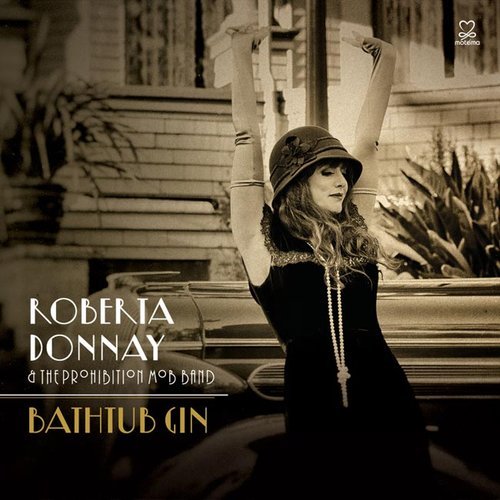
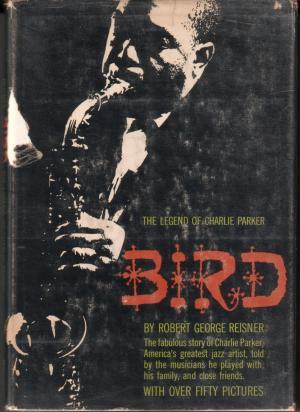


Consumer Guide / No.45 / Musician Roberta Donnay with Mark Watkins.
MW: Roberta, you live in San Francisco, does any of the 60's 'flower power' energy still exist in the area?
RD: I think that the energy of the 1960s does certainly exist in the San Francisco Bay Area, Mark. I'm reminded every time I tour the bookstore called “City Lights” in North Beach and just across, my fav bar ever, called “Vesuvio” - the alleyway in between is named for Jack Kerouac.
http://www.citylights.com/
http://www.vesuvio.com/
I guess this just shows the energy of a city which seemed to encourage ‘Flower Power’, Love and Peace.
San Francisco certainly had that open creative energy when I first moved out here, which is what drew me to it. I feel the energy of an educated society here, mostly, I'm surrounded by similar spiritual seekers, those who feel they want to improve their own lives as well as society, and those who are creative. Creativity is alive and well in the “City by the Bay!”.
And altho' I didn't grow up here, and had no real interaction with the hippies, my friends are certainly proof that the hippies made a real contribution here, and I guess I've sung with quite a few from that era. Although the known music coming out of SF was primarily rock, and I really didn't listen to rock music at all. Even tho' I moved to an area where The Grateful Dead was king, I have to admit
I never really listened to the band, I never was interested in much rock music or white music for that matter. For me it was Blues, it was Jazz, it was R&B. That was pretty much it. I grew up in Washington DC area, and I was lucky to listen to my parents' records and the radio. Most of what I learned was from the radio.. and then later going to jazz clubs. That's pretty much where I stayed as a music fan, to this day. I still listen 99% to jazz.
MW: What's the attraction of the ‘Jazz Age’ and how are you bringing the ‘Roaring Twenties’ boom up-to-date through your music / stage shows?
RD: My attraction to the ‘Jazz Age’ began like almost any good adventure, in kind of a backwards way. I'd finished my first real jazz record with Orrin Keepnews and had been diving into jazz from the 1960s, and I started thinking about the mentors of my mentors. And so I knew that Bessie Smith was Billie Holiday's mentor, but who was Bessie Smith's mentor? Ma Rainey. And I knew Sippie Wallace, and of course Ethel Waters, and Ida Cox. I started listening, quite innocently, to their songs, with no real intention of anything, except I was really looking for something I could "give away for free" to fans and I thought it would be great to find a public domain song. And so I found "You've Been A Good 'Ole Wagon (But You Done Broke Down)" done by Bessie Smith, thinking this was the same song written in 1896 with the same title. I went to record it, and only after "A Little Sugar" came out did I find out that there were two songs with the same title, and the one I recorded was really from around 1926. My plan was to first record a project based on the 20s/30s - then move into the 40s/50s - and it would be like a sweet history lesson using all my mentors in jazz.
But something funny happened. It was like the wind blew this beautiful vision in with all the sounds of the era. And the project kind of created itself. We went to do a mock photo session and I borrowed some 1920s props. I was trying to pose like a 1920s film star, just having fun, and these photos came out like, “WOW!” - I hadn't ever seen myself that way, really, it was just like an experiment leading up to the real photo-shoot. Eddy Bee (Images) helped create the look. And from then on, it was like the branding happened, everyone who saw those photos and came to the shows, were like, “WOW!”, this is really like a thing. My only goal was to educate the public, especially the youth, on the history of this music, and all our music, since it all came from then and before, from the blues. I'm such a history geek, and I ended up getting kinda stuck in the 1920s and 1930s; it took over; all the melodies, the images of that time, the flappers who were pushing the envelope for women's rights in their own way, the gangsters who helped support jazz by opening and operating Speakeasies, the Prohibition, the artists themselves, everyone who built and operated dance halls, and all those who were involved in recording this music and bringing it to the world. I just felt like a kid discovering all this, just like the first time I heard Louis Armstrong or Billie Holiday. Mesmerized. And completely in love.
Our stage show just kept being fun for us. At one point we decided that I should create a character from the era, who could announce stuff, which I did, and I named her "Velma Parrish". There's even a little movie around her on YouTube, along with myriad other videos on the making of our records, live performances, and other fun stuff. Now my name on stage is back to my name but the character stayed and we also the guys really got into their characters as the "Prohibition Mob" - they all dress like gangsters from the 1930s, they drink from flasks, and they all have mobster nicknames. It's really endearing, especially out on tour, when sometimes we have pick-up horn players, and these guys are really like geeky jazz professors who all of a sudden get to dress up and curse like mobsters. It's entertaining for me, that's for sure!
MW: How did you assemble your 'Prohibition' band?
RD: Well Mark, I had lots of friends who I loved playing with in the Bay Area. I called these guys and told them I wanted to put together a band around this recording project and they were all like "YEAH!" and all were so supportive from the very beginning. I realize now I had the perfect group of musicians without really trying or thinking very hard about it; there were no auditions.
Sam Bevan (bass/arranger/producer) and I had been playing these jazz gigs together for a few years already, and one event we'd been asked to put together a wedding gig for friends who were members of the ART Deco Society - and we could only play music up until 1929. So quickly we assembled these charts, which I wasn't really familiar with, but after playing that gig, Sam and I were like, “YEAH!”, this was cool.
I called John R. Burr, pianist, who just embodies this particular sound of jazz/blues, and a drummer I'd met and played with from LA, Michael Barsimanto. Then on horns - Rich Armstrong (trumpet), Wayne Wallace (trombone), and Sheldon Brown (sax/clarinet). Sheldon was the only one I didn't already know - Sam brought him in, and the whole group played. I think we had one long rehearsal with the horns, the rhythm section had one previous rehearsal, and then we went in to record. We'd planned two albums at the same time, so we recorded 26 songs in three days, most of these were first takes. And all I can say is, there's no substitute for great musicians!
Everyone put their heart and soul out there. Then we added a few originals before "Bathtub Gin" came out, and by that time Wayne had moved out of town. So we got Danny Grewen. And our original drummer who I'd played most of my jazz gigs with over the years, Deszon Claiborne.
On the newest project we finally got to work with Mike Rinta on trombone, who'd been playing with the live band all these years : Mike had also worked with Dan Hicks. And so the dye was cast and the band just grew even better than before. We also just added Matt Baxter on guitar for the new project, and Matt and I had been in my original bands back in the late 90s, early 2000s, so it was really perfect.
MW: Dan Hicks died last year (2016). What was it like recording and performing with Dan, and what lives on, Roberta?
RD: It's tough to put into words the effect that Dan Hicks has had on me as a musician, as an artist, as a human being. Dan was incredibly funny, serious and truthful all at the same time. He could be a terror to be around, like when he was unhappy at sound check if the sound guy didn't get what he wanted. But mostly, he was an angel to me, he was kind, he was encouraging, he was supportive way above what he needed to be. And I can't tell you how much fun it was to sing and play his music. It was always just the BEST.
And I was a huge fan as a kid growing up on the east coast, I'd be listening to the radio and all of a sudden there was this sound, and it was "Dan Hicks and The Hot Licks" and it was understood immediately and loved instantly. I think Dan had that effect on most audiences. Once you saw him, and you only had to see him once, you were a fan for life.
Dan was a consummate performer. Like an old vaudeville guy. He could dance, he could sing, he could tell jokes, he could play. And then of course, he could write. He would do anything, anything, to entertain you. There were no boundaries. And sometimes you wish there were! Ha! He taught me more as an entertainer than anyone had in my life. And I was lucky he called me that day in 2005, to come over and sing a few songs with him. I had no idea that this would become my job or that he would become such an important figure in my life. He's definitely one of my musical mentors, along with Orrin Keepnews. I'm so lucky to have had both these men, genius musical figures, in my life. I was lucky to have been on the last three records with him, too. Dan even opened solo, on one of our "Prohibition Mob" shows once. On his own, he wrote a Walter Winchell radio show and performed this along with a song and soft shoe, to open our show. He was very very kind. And he really dug our music! Of course, I also credited him with exposing me to some of the great songs I ended up doing, including "Rocking Chair" , and also I found "Shake Sugaree" written by Elizabeth Cotten, who Dan introduced me to...
MW: List (in order) your Top 5 favourite books, movies & records of all-time...
RD:
Books:- 5 Unlocking the Mysteries Of Birth And Death - Daisaku Ikeda (2004) 4 The Source - James A. Michener (1965) 3 any poetry book by Charles Bukowski 2 Bird - The Legend of Charles Parker - Robert Reisner (1962) 1 The New Human Revolution - Daisaku Ikeda (ongoing series, 30th volume published 2016)
Movies:- 5 Ghandi (1982) 4 Walk The Line (2005) 3 Pie Lady Of Pie Town (2014) 2 Gigot (1962) 1 The Apartment (1960)
Records:- 5 Lady In Satin - Billie Holiday (1958) 4 Kind Of Blue - Miles Davis (1959) 3 Ballads - John Coltrane (1963) 2 Innervisions - Stevie Wonder (1973) 1 West End Blues - Louis Armstrong and His Hot Five (1928)
MW: Tell me about the last album...
RD: Our last album "Bathtub Gin" released in 2015, features both 1920s-30s covers and four originals written for the band, co-written by me, including "Happy Feet", "Bathtub Gin", "Horizontal Mambo", and "Throw Your Heart Over The Fence". These were co-written with Joel Evans, Sam Bevan, Gerry Grosz, and Jana Herzen. The album did well, and won one of the BEST albums 2015 in DownBeat Magazine. We had a great time touring both the records on Motema (including "A Little Sugar", released 2012) and the band has gotten great feedback on the live performances as well as airplay ("A Little Sugar" charted and stayed for nine weeks on the Jazz Charts). It's always fun to play this music! Both these records were produced and co-arranged by me and Sam Bevan.
MW: Roberta, what's in store for 2017?
RD: The newest album (not out yet), is called "My Heart Belongs To Satchmo" was produced by me, Sam Bevan, Matt Wong and (co-produced vocals) Annie Stocking. Arranged by Matt Wong and Sam Bevan, and co-arranged by me. The new record features 15 iconic tracks of Louis Armstrong recorded by his Hot Five and Hot Seven bands in the 20s-30s and a couple from 1940s.
We're planning tours starting in Europe and moving across the US starting October 2017, but meanwhile can be found playing around Northern CA (and earlier this year we did a stint in Vegas).
Please check the website for updates http://www.robertadonnay.com/ and Facebook https://www.facebook.com/robertadonnay and Twitter https://twitter.com/robertadonnay
We post nearly everything, all the time, Mark!
© Mark Watkins / May 2017
0 notes
Text
Lucy and Viv Put in a Shower
S1;E18 ~ January 28, 1963


Synopsis
Lucy decides that her home needs another shower and asks Harry to help her install it. Harry and Eddie get out of helping by paying a local plumber to do the job under the guise of being an old friend. After Lucy drives him away with her meddling, she and Viv finish the job themselves, nearly drowning as a result!
Regular Cast
Lucille Ball (Lucy Carmichael), Vivian Vance (Vivian Bagley), Jimmy Garrett (Jerry Carmichael), Ralph Hart (Sherman Bagley), Dick Martin (Harry Connors)
Candy Moore (Chris Carmichael) does not appear in this episode, although the character is mentioned and is the catalyst for Lucy wanting to install a second shower.
Guest Cast

Donald Briggs (Eddie Collins) makes the fourth of his seven appearances as Viv’s on-again / off-again boyfriend.
Eddie’s pet name for Viv is “Tootsie”.

Stafford Repp (Joe Melvin, a plumber from Ridgebury) made a career of playing policemen even before he became famous as Chief O'Hara on TV’s “Batman” (1966-68). He played two different officers of the law on “Dennis the Menace” in 1962 and 1963, alongside “The Lucy Show’s" Mr. Mooney, Gale Gordon. Coincidentally, “Dennis the Menace” had their own Mr. Mooney, who was a police officer! Repp returned to “The Lucy Show” for “Lucy Is a Process Server” (S2;E27) and did 1970 episode of “Here’s Lucy” as (what else?) a police detective!

This episode was filmed on December 13, 1962. It is sometimes referred to as “Lucy the Plumber”.

This is one of two Season 1 episodes (as well as 30 others) that somehow fell out of copyright and into public domain, which accounts for its appearance in low-cost / low quality DVDs.

The original broadcast was sponsored by Jell-O, and featured the product in the opening and closing credits.
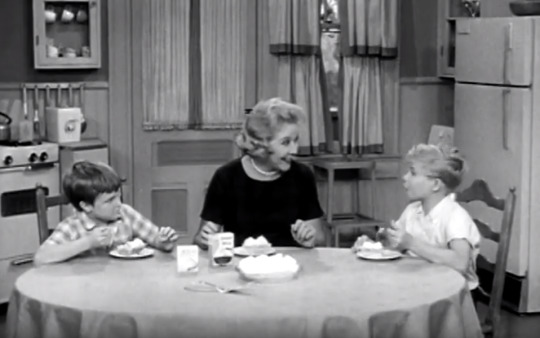
There was even a special commercial featuring Vivian Vance, Jimmy Garrett, and Ralph Hart in character extolling the ease and versatility of Jell-O. During season one all actors except Lucille Ball participated in such ‘in-character’ commercials. In her medium shots, Vivian Vance’s eyes are clearly reading from the teleprompter just over Ralph Hart’s head.

The day this episode aired, January 28, 1963, film director John Farrow (inset photo) died. Farrow directed Lucille Ball in the 1939 movie Five Came Back. The film was made at RKO Studios. In January 1963, RKO was known as Desilu Studios and Lucille Ball was its president. Farrow was married to another redhead, Maureen O'Sullivan, and left behind seven children, including daughter Mia Farrow.
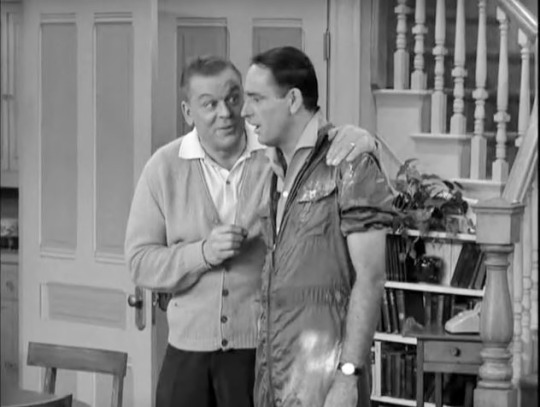
Harry’s favorite dish is Eggs Benedict.

When Chris hogs the bathroom, Jerry and Sherman are washing their hands in the kitchen sink before going to the Y to play basketball. Jerry says that at the Y, “They frown on filth!” The Y has been mentioned in several episodes so far, and in “Lucy Digs Up a Date” (S1;E2) we see inside Danfield’s new YMCA.

Reinforcing the YMCA theme, the boys have a pennant for Indian Guides. The youth nature program started in 1926, although the name later morphed into Y Indian Guides, then simply Y Guides.

Lucy prices putting in the new shower with Paisley the Plumber. His prices are so high that Lucy says they are in danger of needing “socialized plumbing.”
“The only way to get clean is to be filthy rich.”
These jokes are clearly about the high cost of health care in America, which was a topical issue, even in the early 1960s. In 1962, President Kennedy appeared at a rally at Madison Square Garden to promote the King-Anderson Bill, an early form of Medicare. In February 1963, just a week after this episode aired, author Ayn Rand gave a talk in Ocean, New Jersey, against socialized medicine.
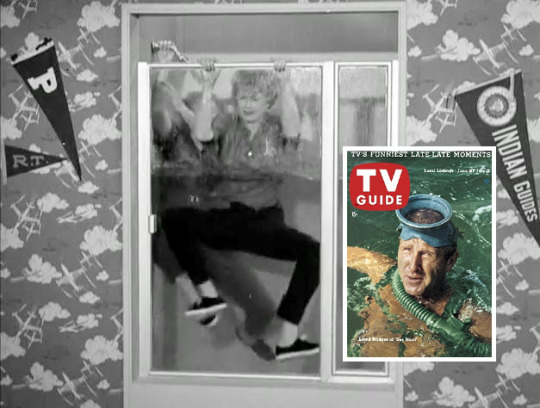
When the water in the shower begins rising to shoulder level, Lucy says “Where’s Lloyd Bridges when you need him?” Lloyd Bridges was the star of “Sea Hunt” (1958-1961), a TV series about a scuba diver which featured extensive underwater filming. He was also mentioned in the same context in “Lucy Buys a Boat” (S1;E30). Bridges played a doctor on the season five opener of “Here’s Lucy” in 1972.

To allow for another camera angle, the wall inside the shower stall opposite the taps was made of glass. It is not visible when the camera shoots from the front. While it is supposed to be invisible (the ‘fourth wall”) it collects water drops and Lucy puts her hands on it for support.

At one point Lucy doubts Joe is really a plumber and says “You could fool the panel on ‘What’s My Line’.” “What’s My Line” was the name of a popular CBS quiz show which had three blindfolded celebrity panelists trying to guess the profession of a mystery guest by asking yes or no questions. It ran from 1950 to 1967 so it aired during both “I Love Lucy” and “The Lucy Show.” Lucille Ball was a celebrity guest six times between 1954 and 1965, one of which was broadcast just a few months after this episode. Desi Arnaz appeared on “What’s My Line” three times, one of which was alongside Lucy.

In this episode, both the Statue of Liberty and Mount Rushmore are used as punchlines. Lucy voiced Lady Liberty in “Swing Out Sweet Land,” a 1971 TV special celebrating American history.
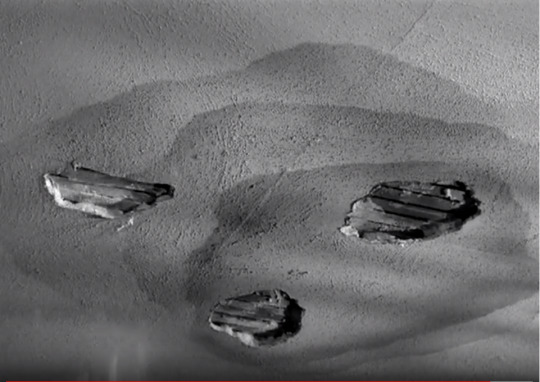
When the water causes the plaster to fall from the ceiling, the production uses an insert shot of the water-stained kitchen ceiling. Of course, the show’s sets had no ceilings to accommodate lighting, so this shot had to be recreated and inserted into the film.
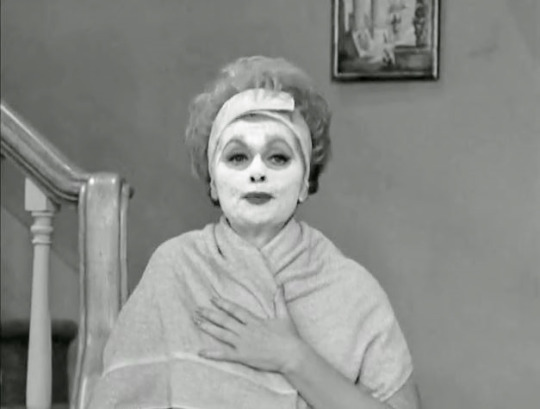
VIV: “Lucy, I wanna tell you something. This is absolutely the last time I slip into my coveralls to be an apprentice on one of your dreadful little projects.”
LUCY: “Aw, no. These are things we’re gonna look back on and laugh at one day when we’re old and gray.”
VIV: “And from the way things are going that may be next week.”
This sentimental dialogue at the end of the episode pretty much sums up Lucille Ball and Vivian Vance’s comic partnership. Of course, this is far from the last time she slips on those coveralls to help Lucy get out of a predicament. The pair did indeed stay friends off screen until they were old and gray.

Between takes, the crew kept the set laughing with this funny sign.
Shower Scenes!
She’s not exactly Marion Crane from Psycho (1960), but Lucy’s shows had their fair share of shower scenes.

In the “I Love Lucy” pilot Lucy and Ricky Ricardo are standing in their bathroom in front of a shower curtain.
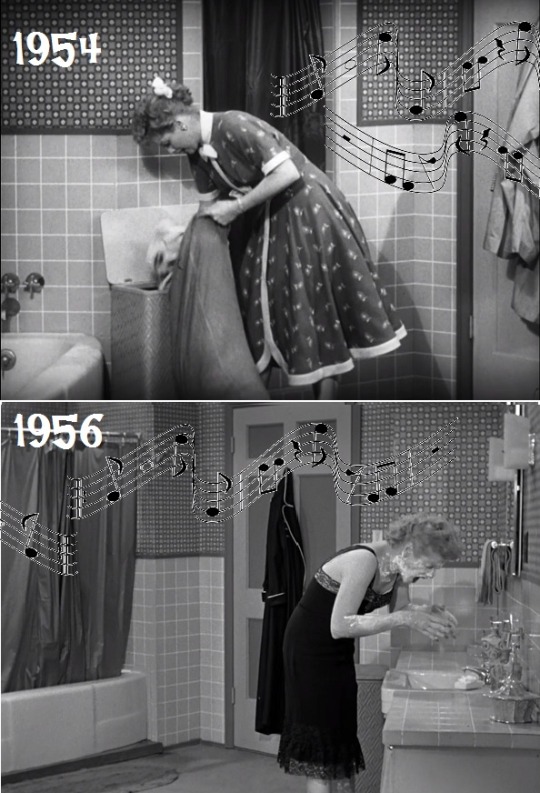
Ricky RIcardo loved to sing in the shower - which actually moved locations! In “Bonus Bucks” (1954) it was a shower stall and In “Little Ricky Learns to Play the Drums” (1957) it is a tub shower! (BTW, both bathrooms are in their second, larger apartment.)

In “Lucy Goes to Sun Valley” (1958), everyone seems to interrupt guest star Fernando Lamas when he is trying to take a shower. She also interrupted the shower of Cornel Wilde in “The Star Upstairs” (1955).
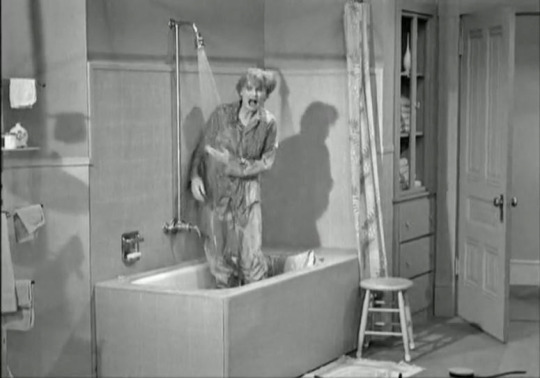
At the end of “Lucy is a Referee” (S1;E3), Lucy Carmichael beds down in the tub and mistakenly turns on the shower.

Viv took an unscheduled ‘safety’ shower in the chemistry lab when “Lucy and Viv Take Up Chemistry” (S1;E23).
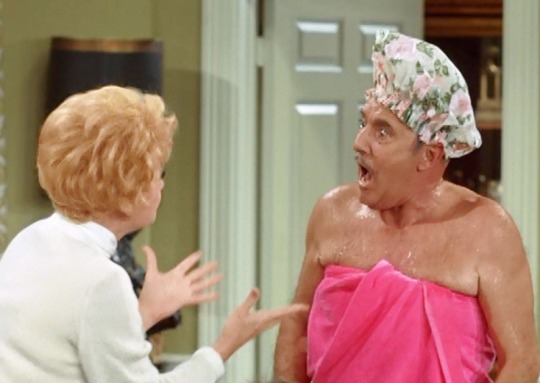
Lucy Carter barged in on Harry’s shower in “Lucy Stops a Marriage” (HL S3;E16) in 1970.

Lucy Carter has a realization in the shower, when she visited Danny Williams on “Make Room For Granddaddy” (S1;E16) in 1971.
Blooper Alerts!

Floor Plan Fiasco! This is the second time we have visited Jerry and Sherman’s bedroom, the first being “Lucy and Her Electric Mattress” (S1;E12). A quick pan to the left side of the room reveals that there is a dresser where the boys’ bunk beds were located. In that episode the Indian Guides pennant was just to the right of the door. It is now just to the right of the shower, which was formerly a closet.

Talk Show Stories! Lucille Ball later stated that she nearly drowned during the filming of this episode, when she went to the bottom and found herself unable turn herself upright. Vivian Vance realized she was in trouble, and pulled Lucy up by her hair. Vance ad-libbed until Lucy could catch her breath and resume her lines. The near-disastrous moment was edited for broadcast so that we see Lucy go down, Viv react to her distress, and then Lucy surface again. It is clear there was an edit in the film due to water levels in the tank between the takes. This scene was probably rehearsed without water and then done in one take. Later in her career, Lucille Ball also stated that she nearly drowned while doing the grape stomping in “Lucy’s Italian Movie” (ILL S5;E23).

Shoddy Construction! Grasping at the top of the shower door, Lucy accidentally knocks loose the chrome trim.
Fast Forward!

At the end of the episode, Lucy convinces Viv to help her plaster the ceiling after the shower damage. Eleven months later, Lucy and Viv are once again plastering the kitchen ceiling after Sherman accidentally leaves the bathtub water running in “A Loophole in the Lease” (S2;E12).

Lucy Carmichael again did her own plumbing in “Lucy and the Plumber” (S3;E2) starring Jack Benny and Bob Hope as plumbers!

A scene from this episode was included in “Lucy and Viv Reminisce” (S6;E16), the series’ only clips episode.

On “Here’s Lucy,” Richard Burton disguised himself as Sam the Plumber in “Lucy Meets the Burtons” (HL S3;E1). Burton recited Shakespeare while fixing her bathroom sink but an unimpressed Lucy Carter refused to pay extra for it!

The episode was playing in the background during the short horror film Room To Breathe (2006). The show’s opening credit sequence was also included. It likely was chosen as it is in public domain and no royalty fee or permission were needed for its use.

In 2017 “Will & Grace” repeated the shower stall stunt in “Who's Your Daddy?” (S9;E2) with Debra Messing (Grace) and Megan Mullalley (Karen) trying to keep their heads above water. In Spring 2020, the pair transformed into Lucy and Ethel for one of the final episodes of their sitcom's reboot. Lucie Arnaz was also in the cast.
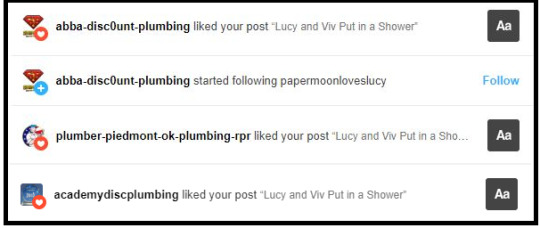
It seems that several real-life plumbers on Tumblr are Lucy fans! Or plumbing fans! Or both!

“Lucy and Viv Put In a Shower” rates 5 Paper Hearts out of 5
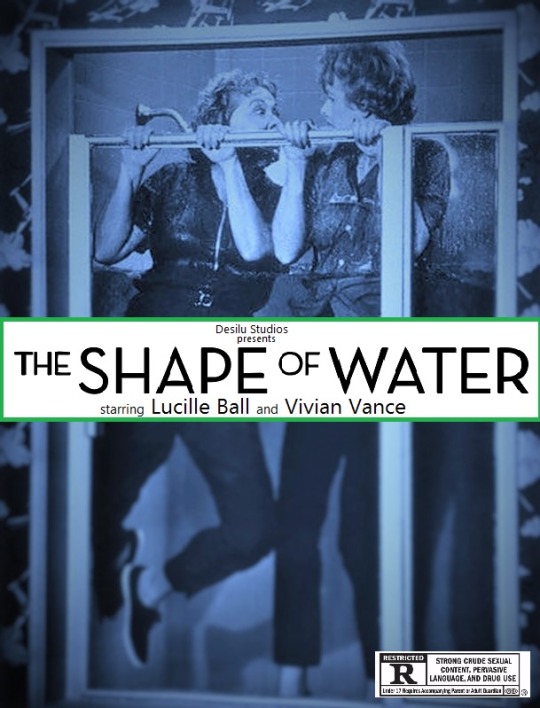
A nominee for Best Picture 2019 in the Desilu Academy Awards!
#The Lucy Show#Lucy and Viv Put in a Shower#Plumbers#Lucille Ball#Vivian Vance#CBS#TV#1963#Shower#DIY#Stafford Repp#John Farrow#Jimmy Garrett#Ralph Hart#Room To Breathe#Will and Grace#Debra Messing#Richard Burton#I Love Lucy#Fernando Lamas#Cornel Wilde#Gale Gordon#Dick Martin#What's My Line#Eddie Briggs#YMCA#Indian Guides#Jello#Lloyd Bridges#Sea Hunt
9 notes
·
View notes